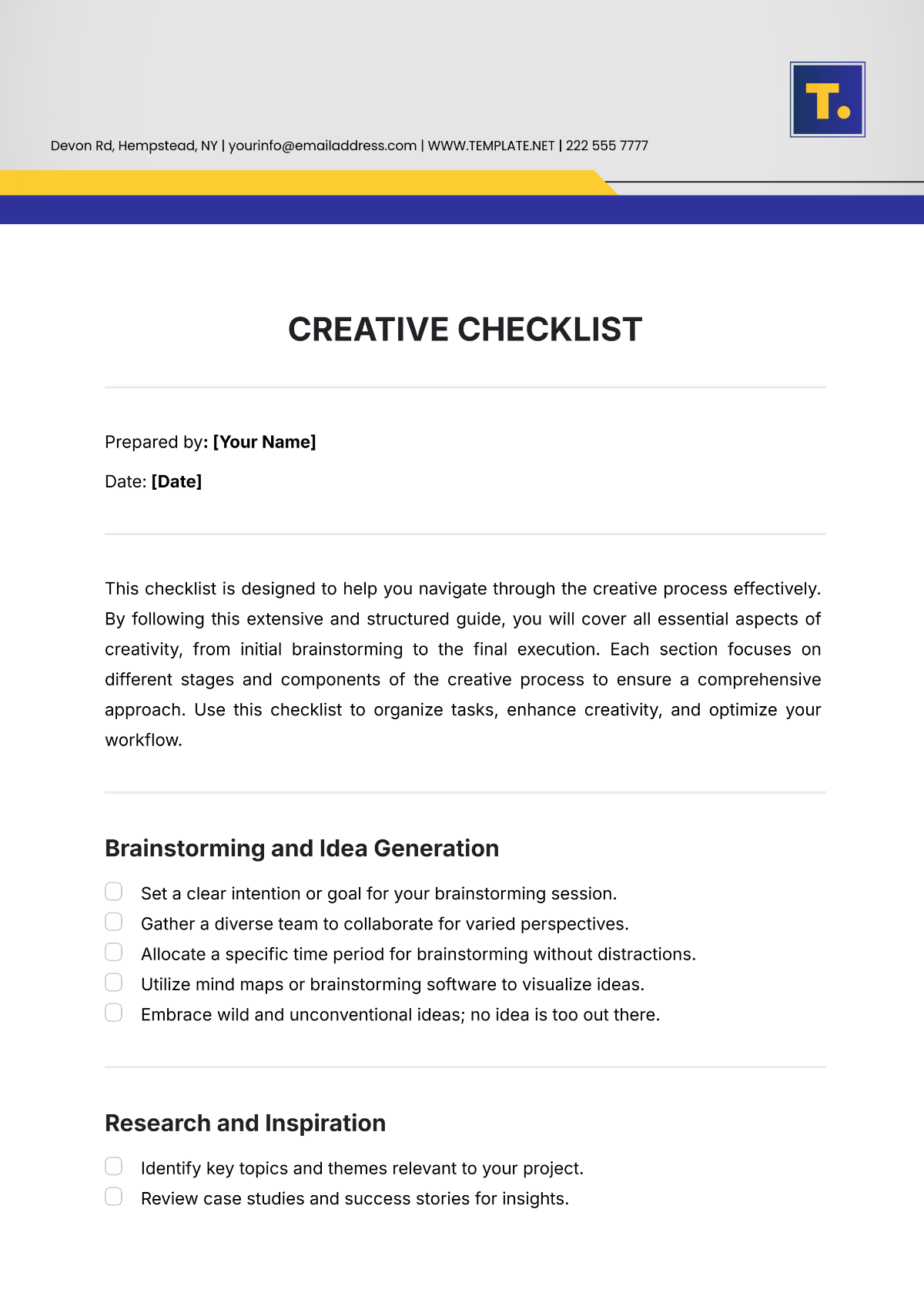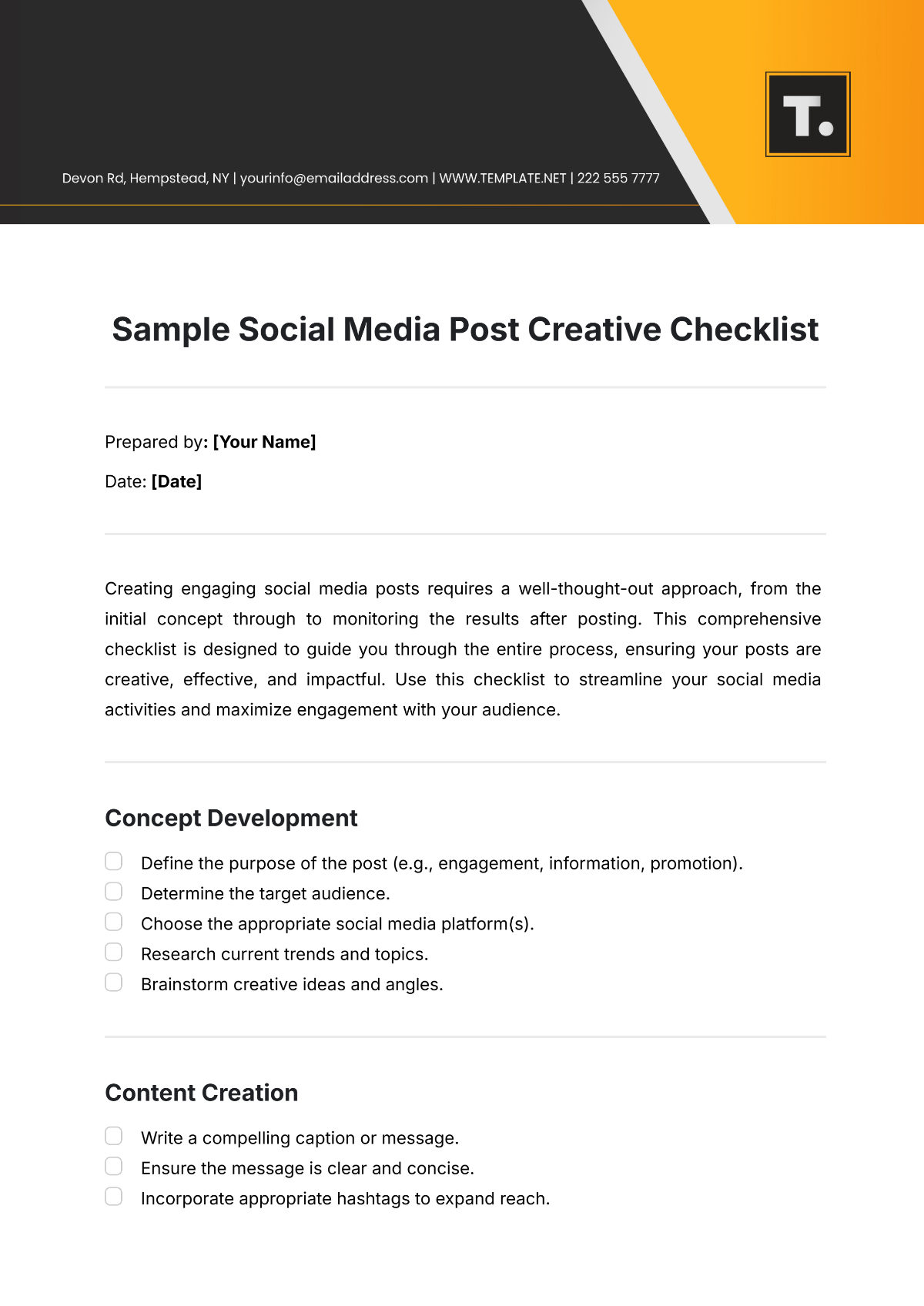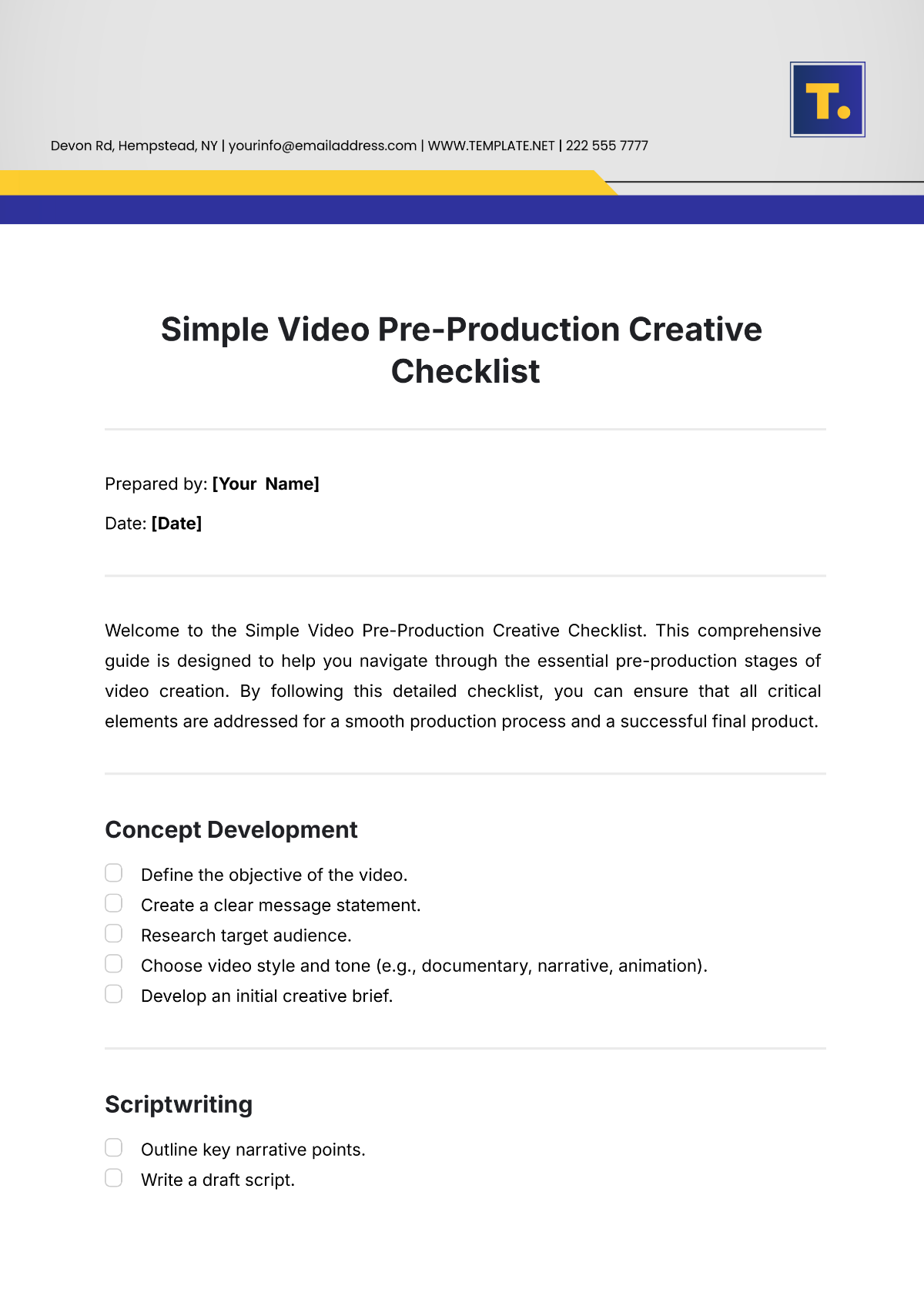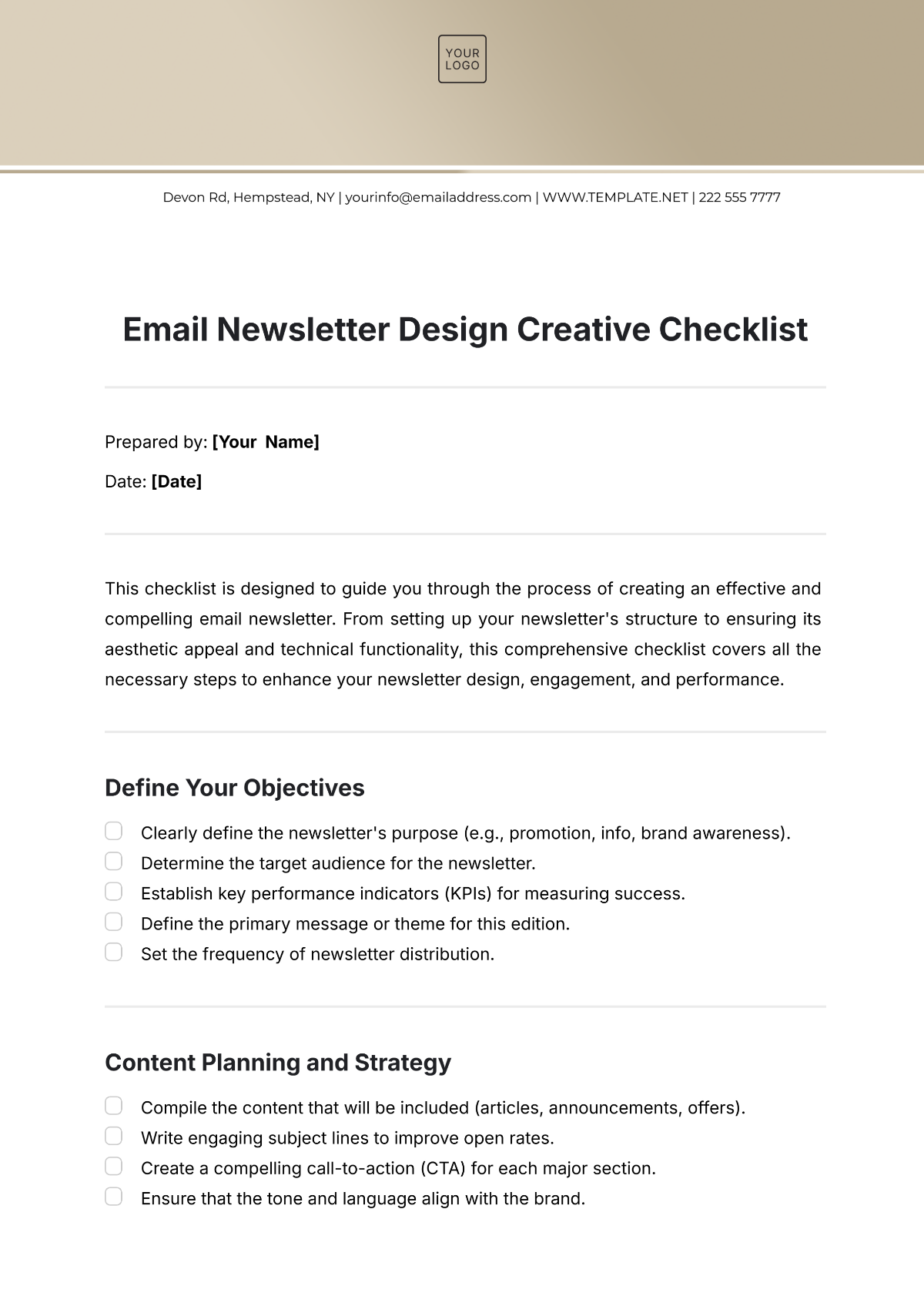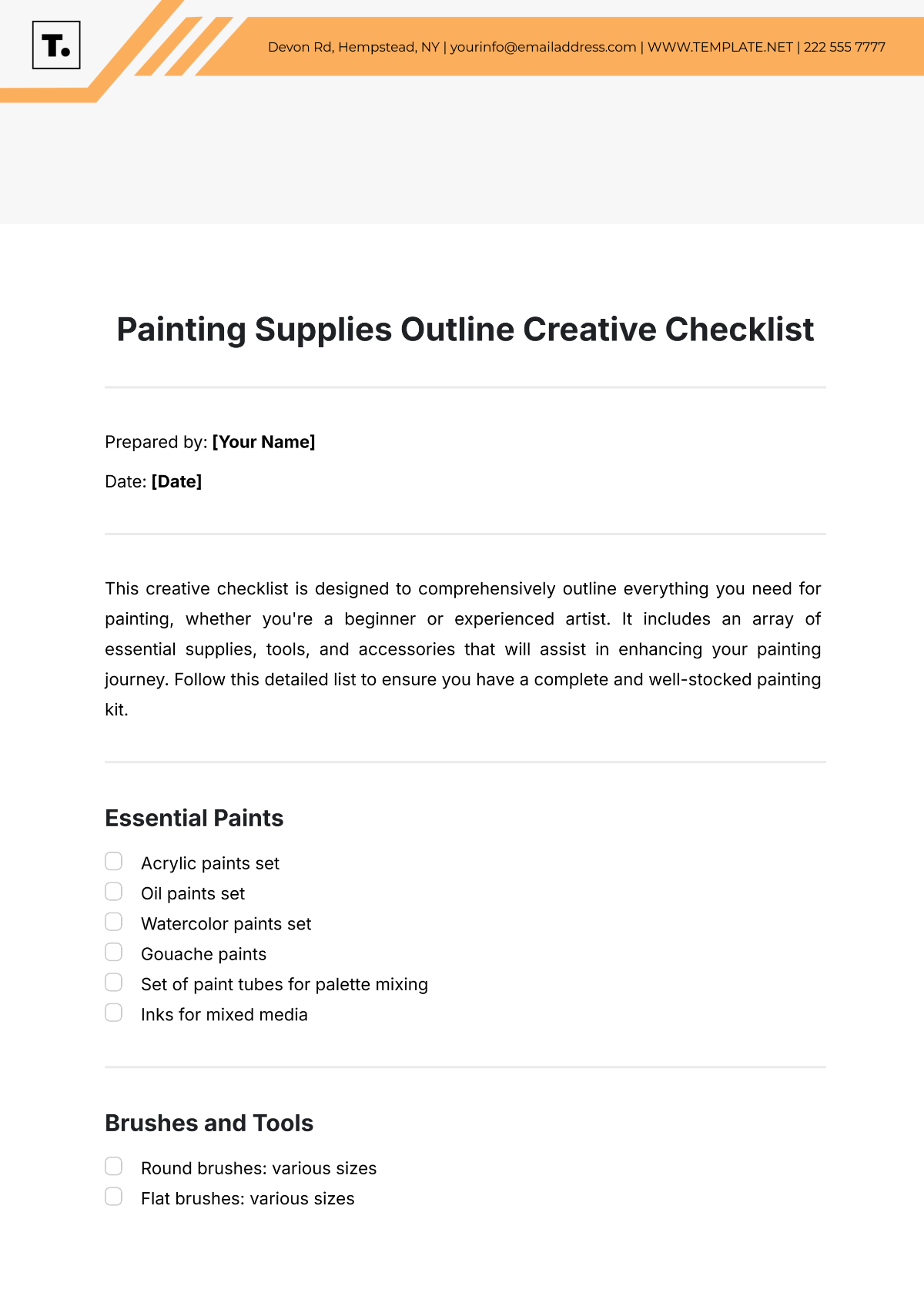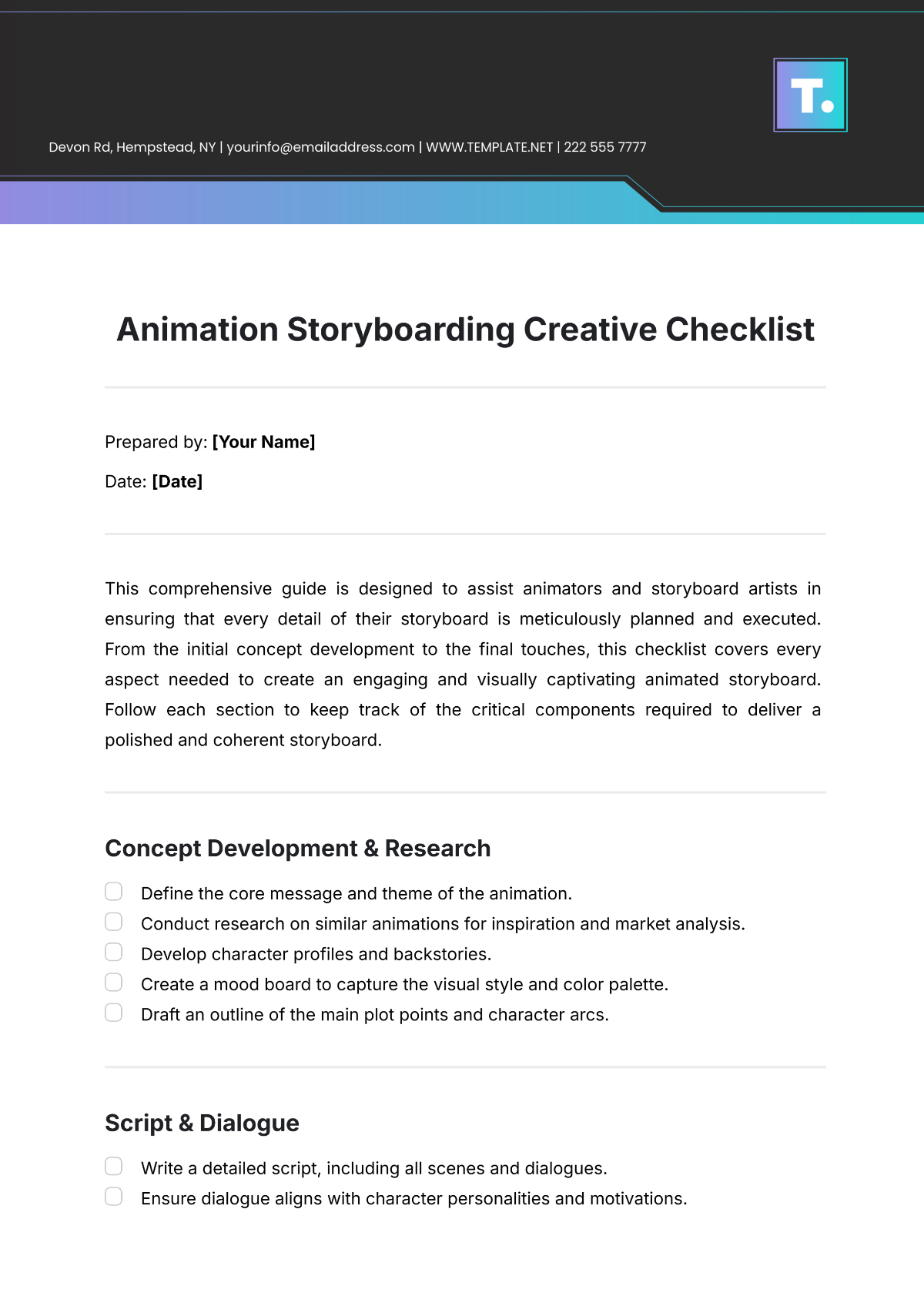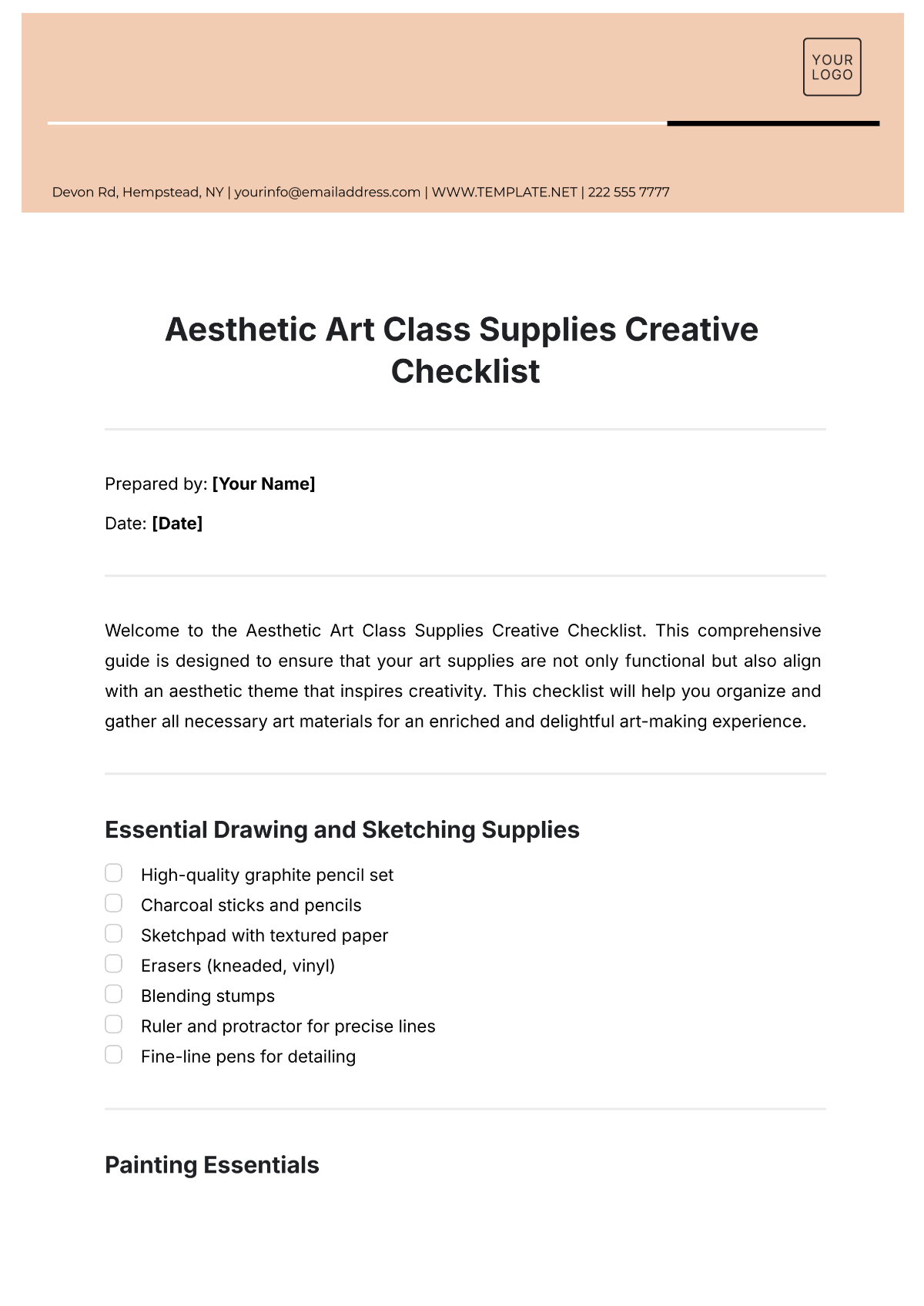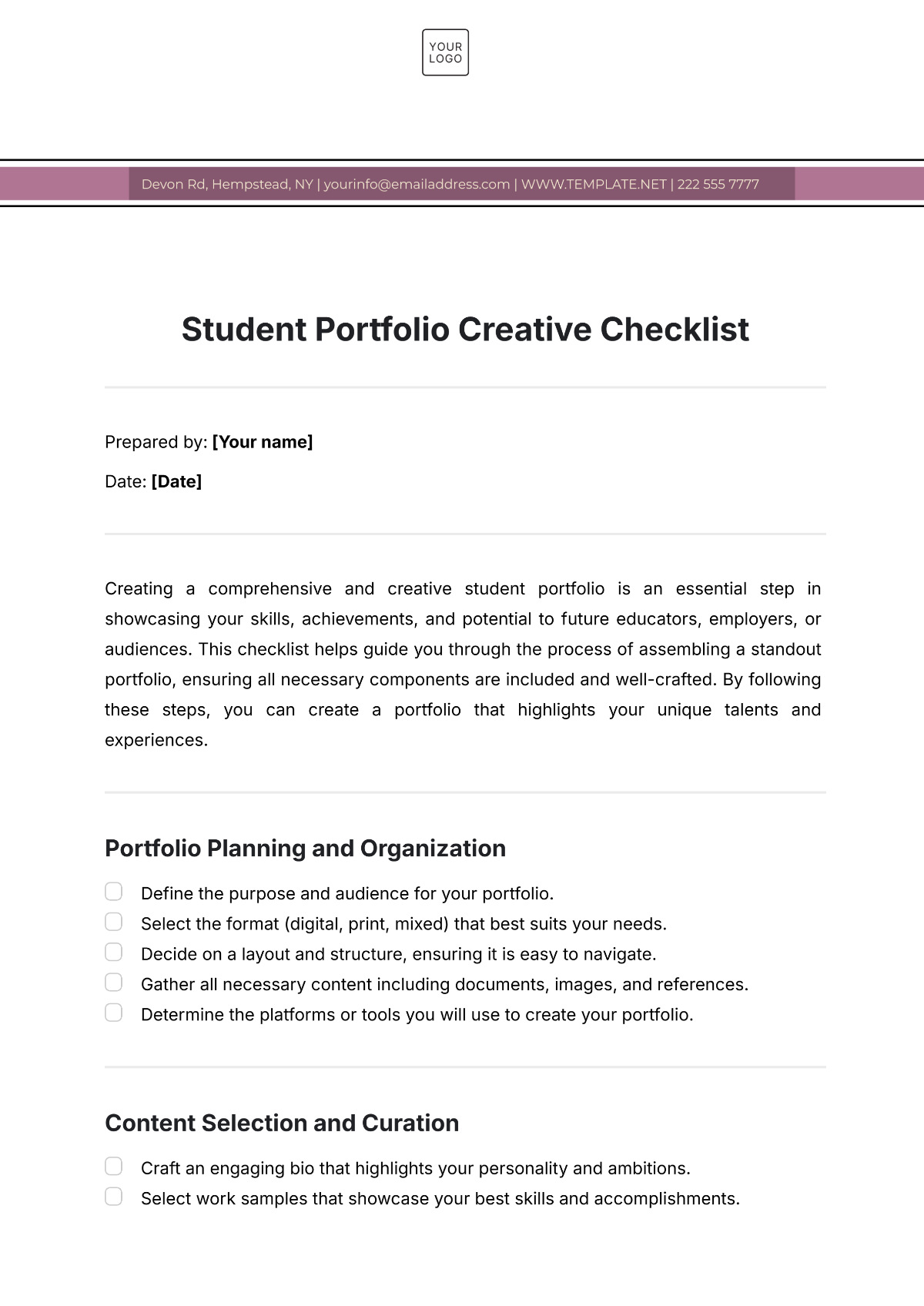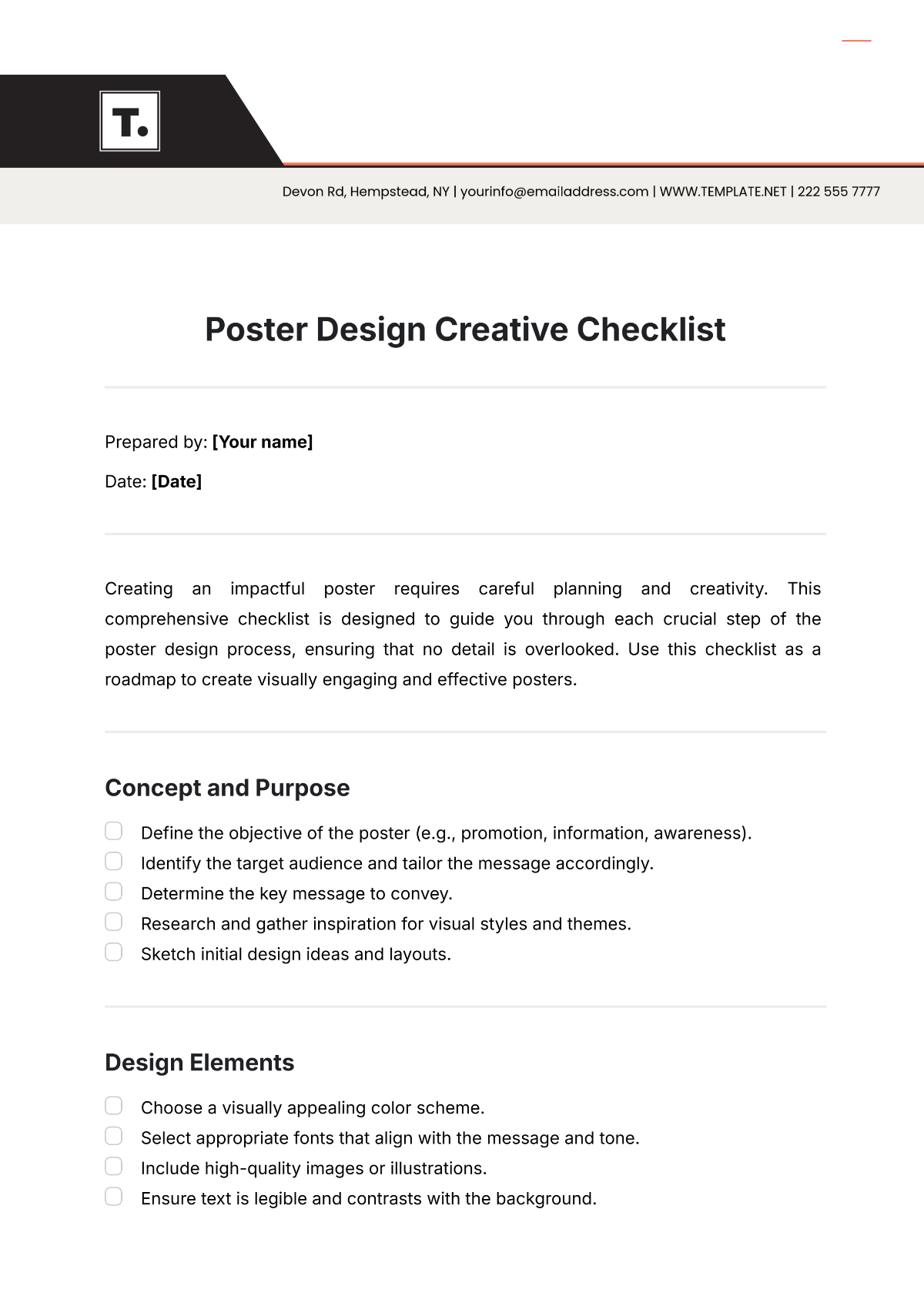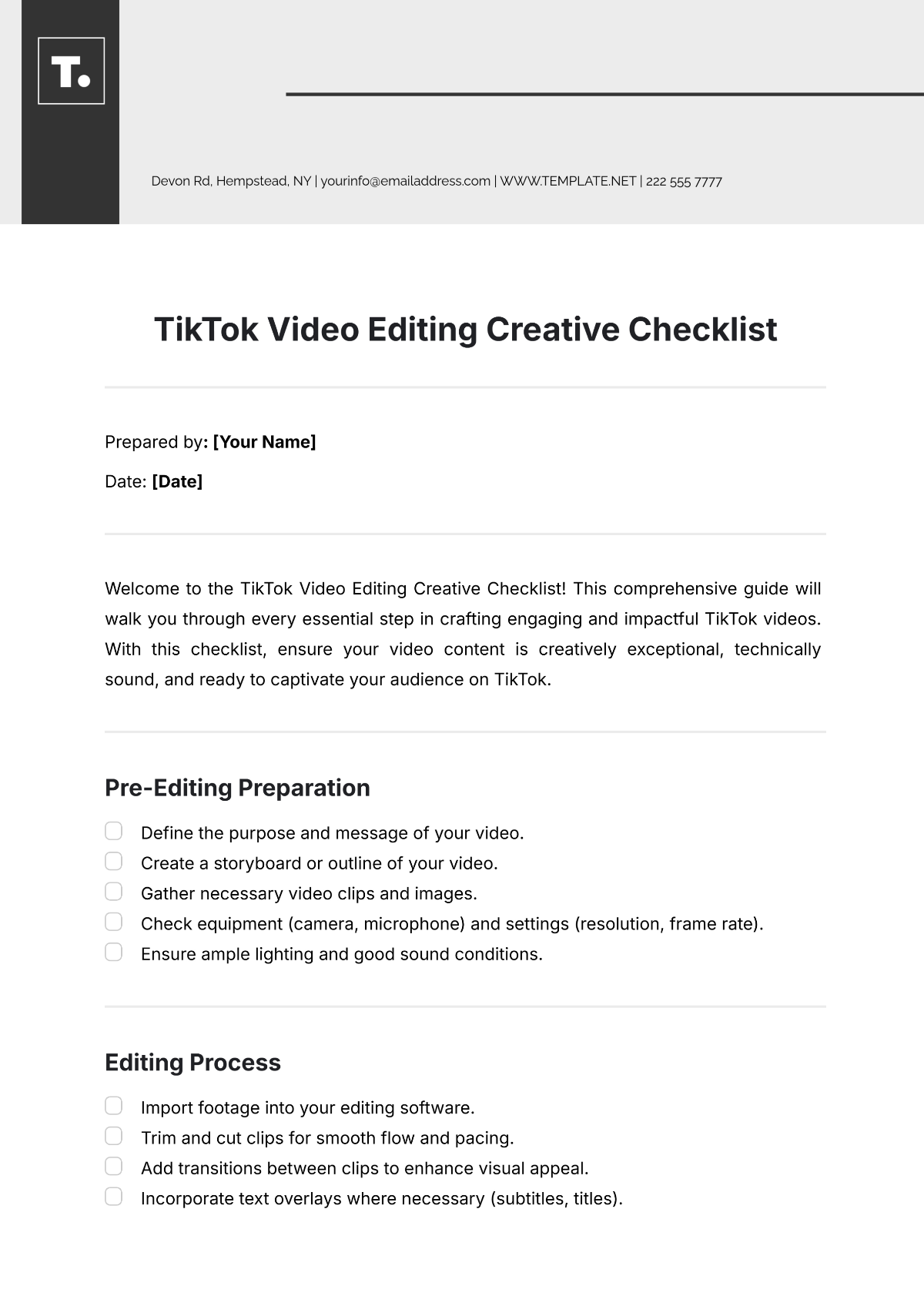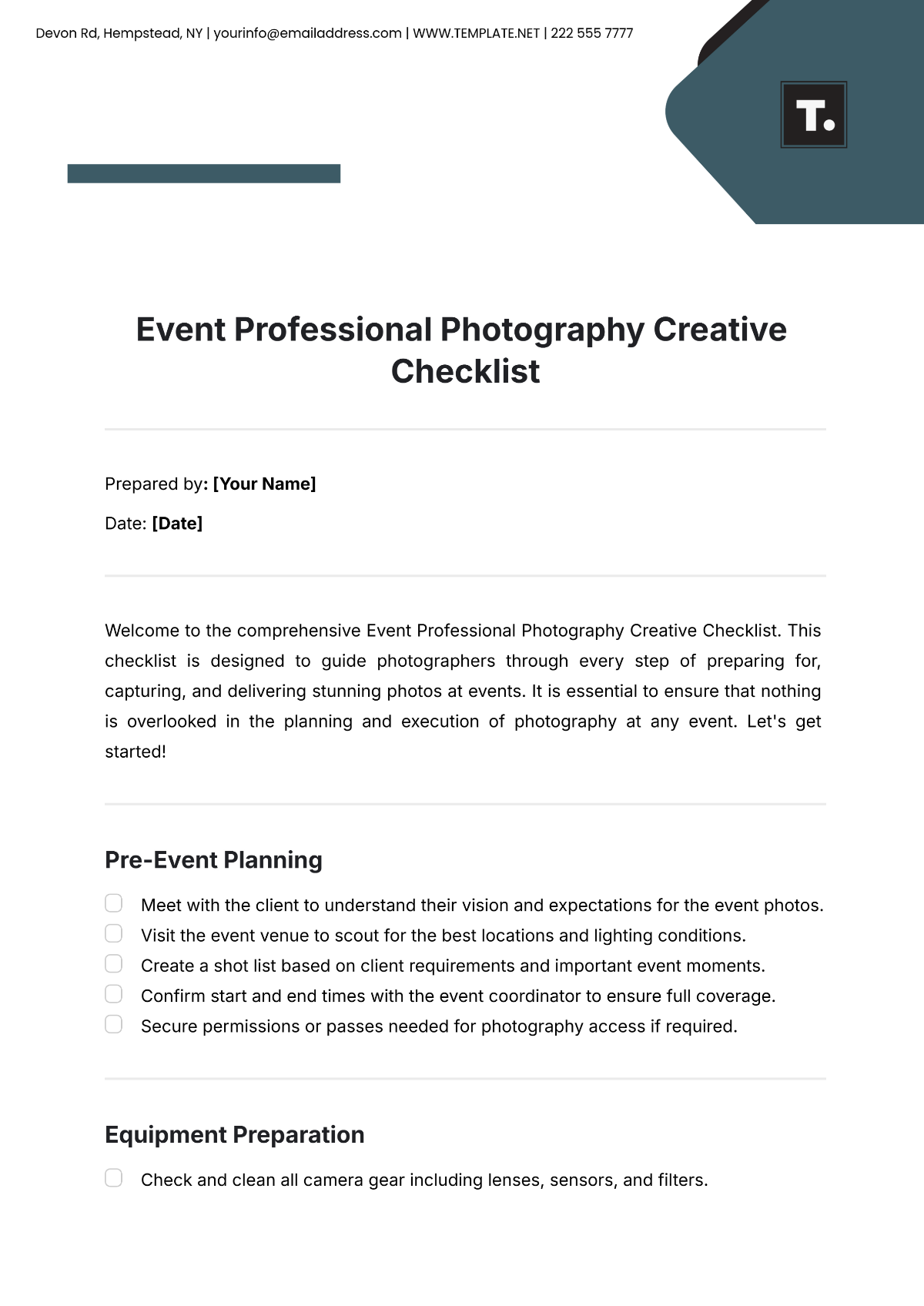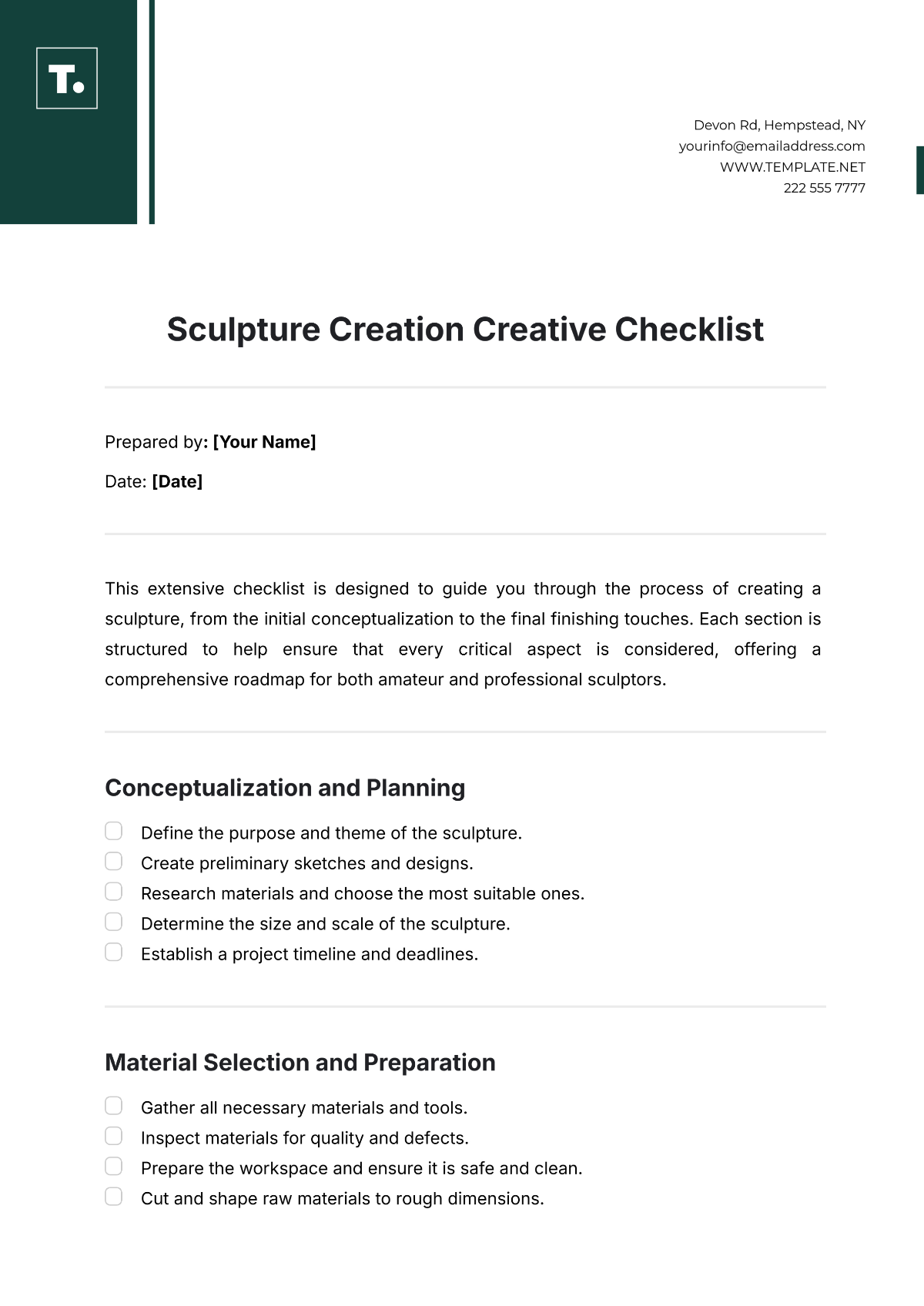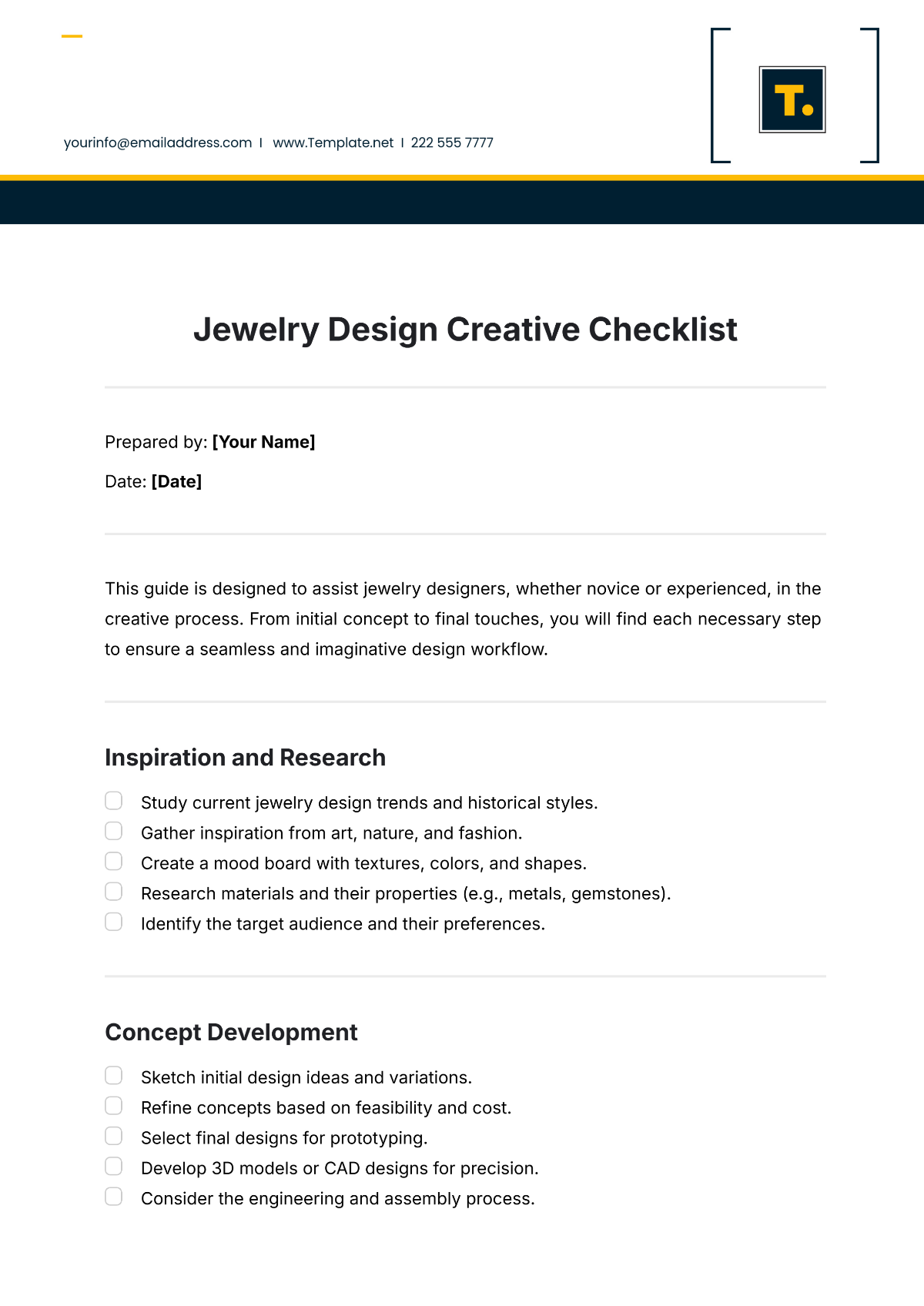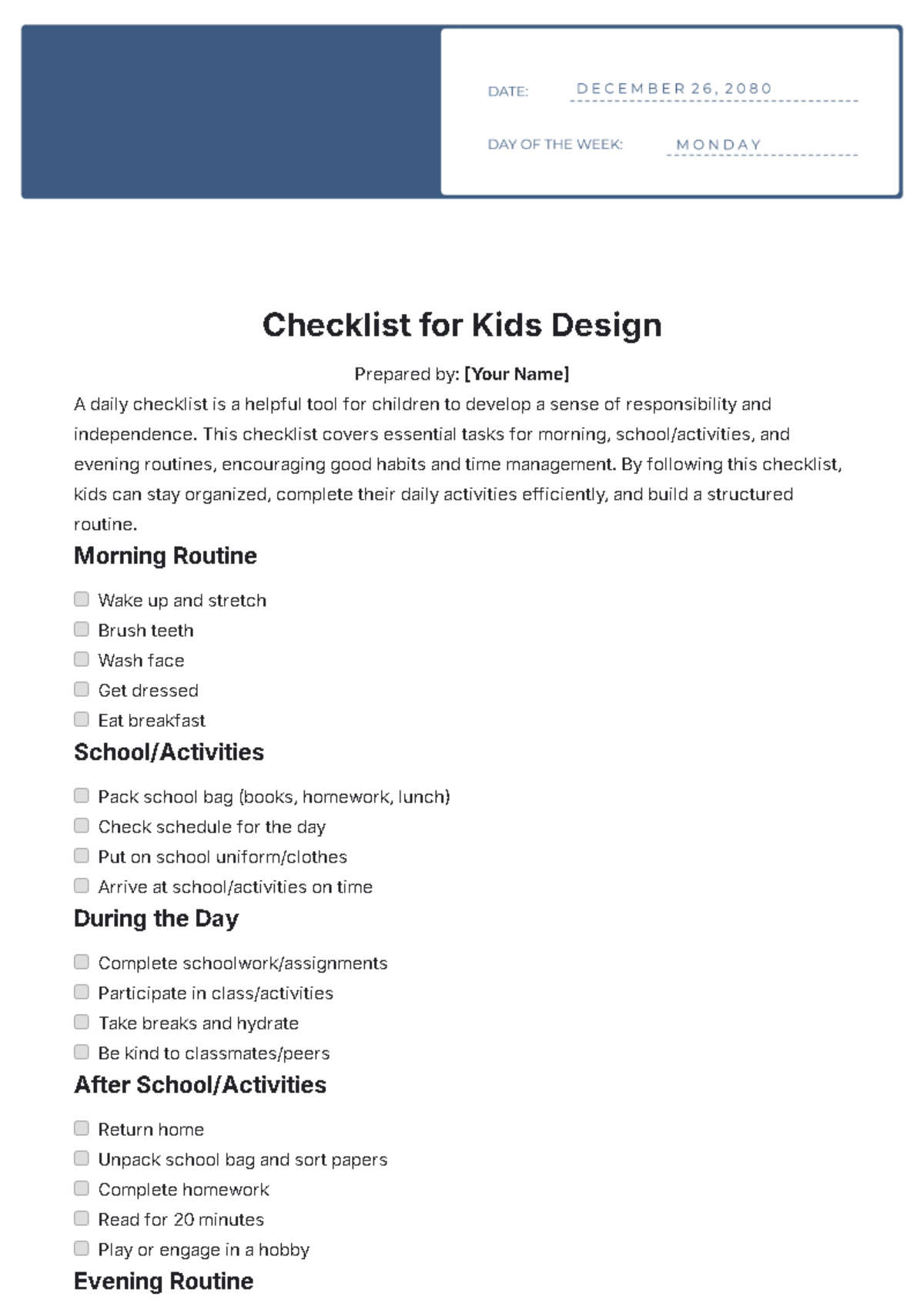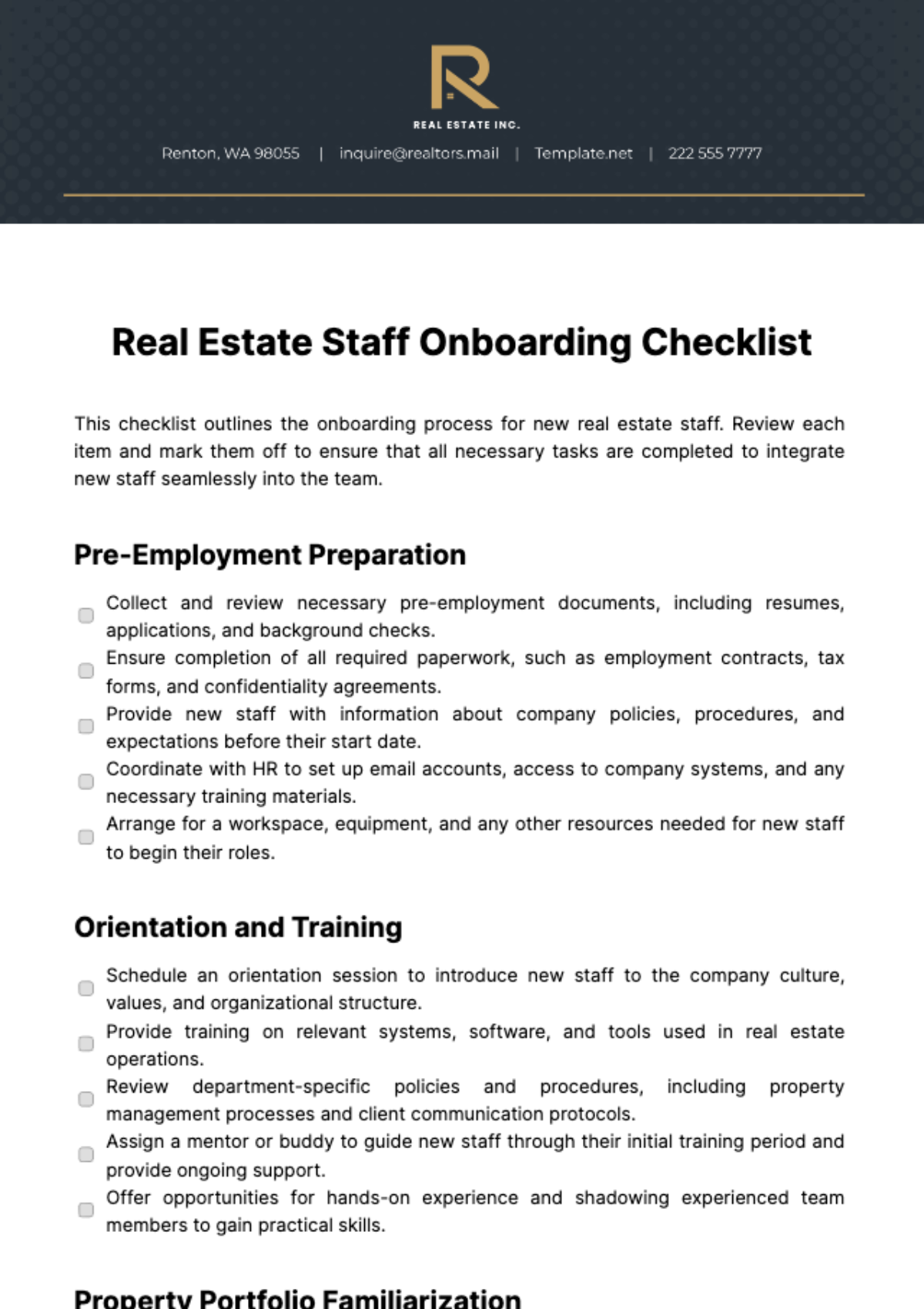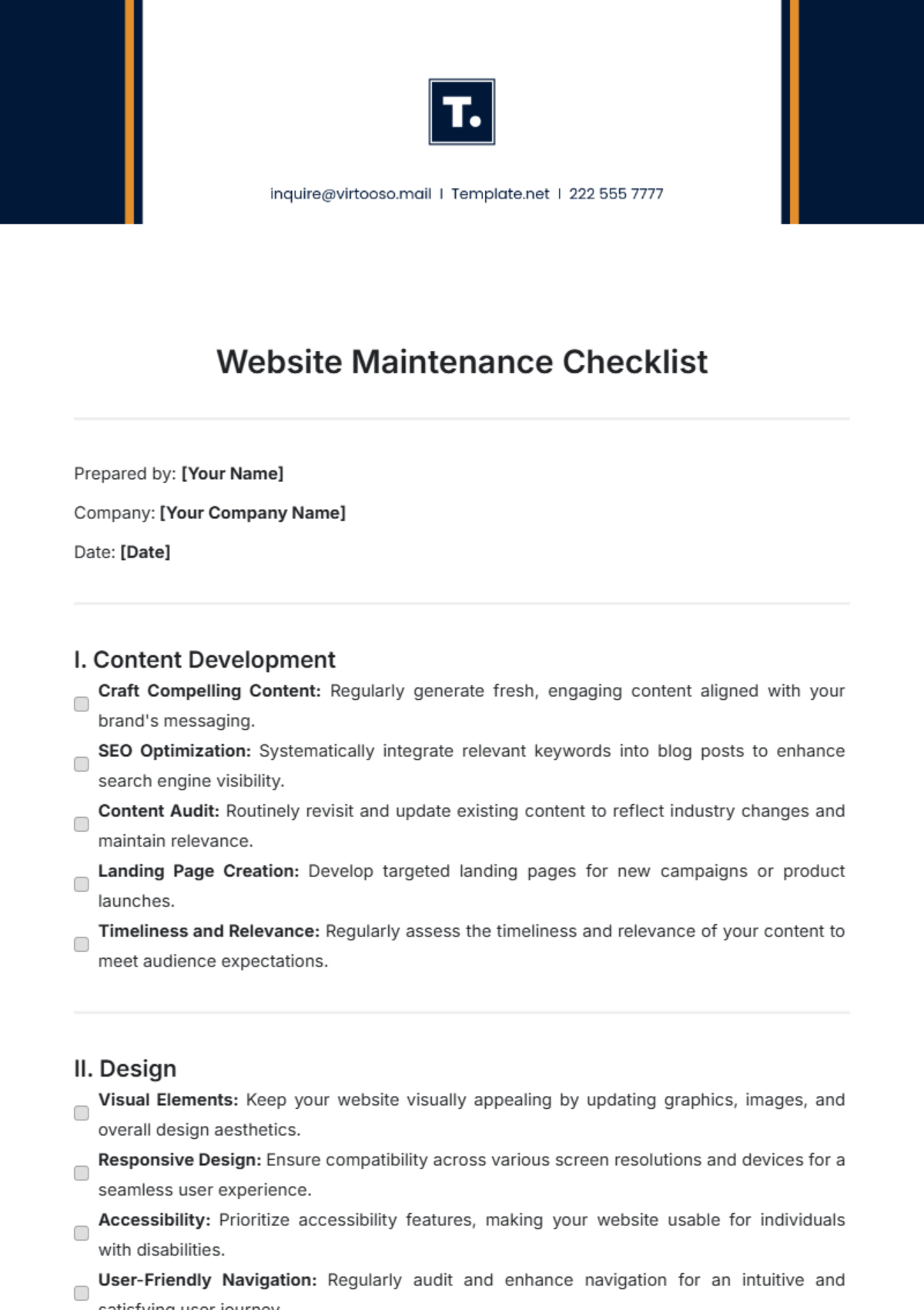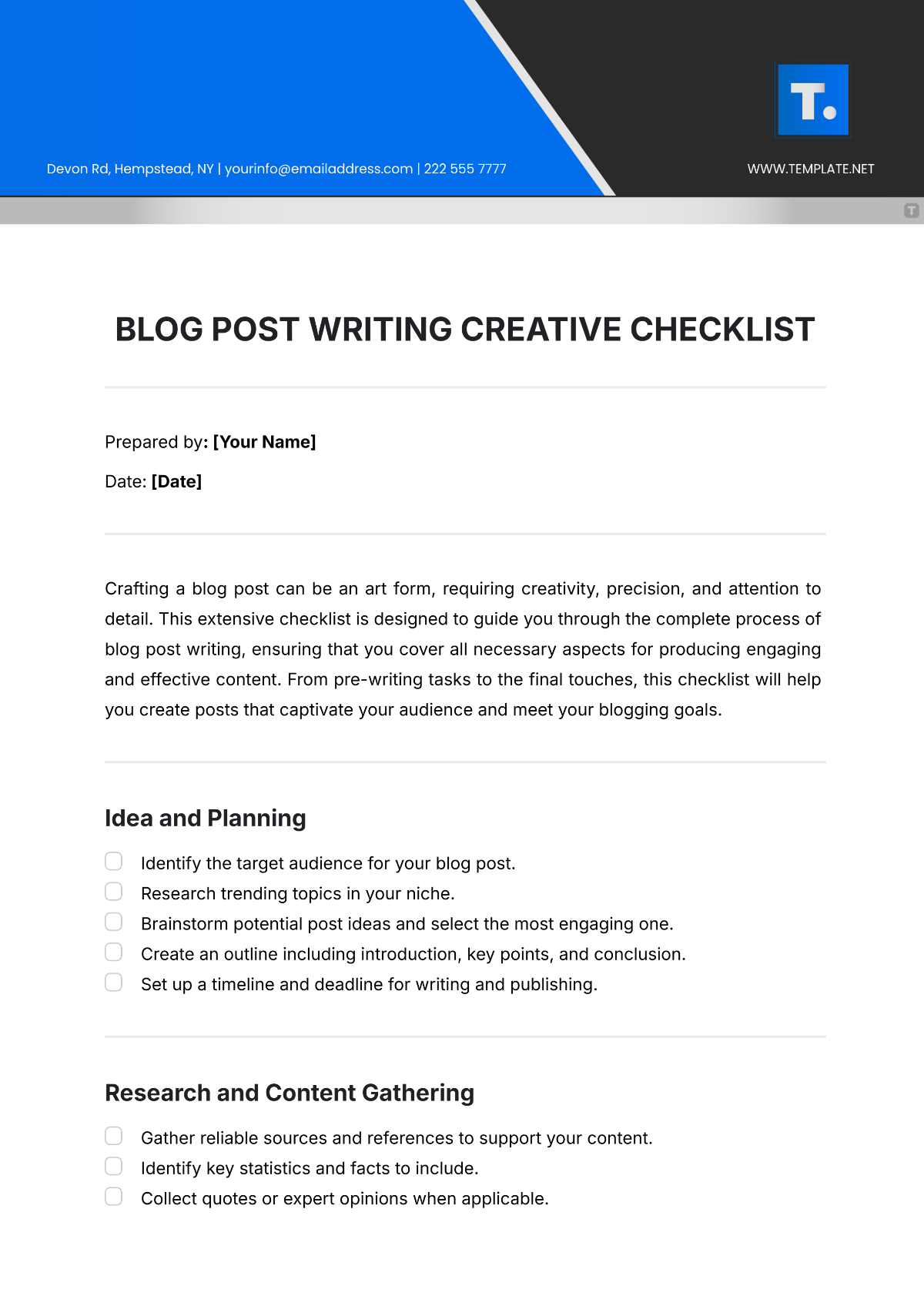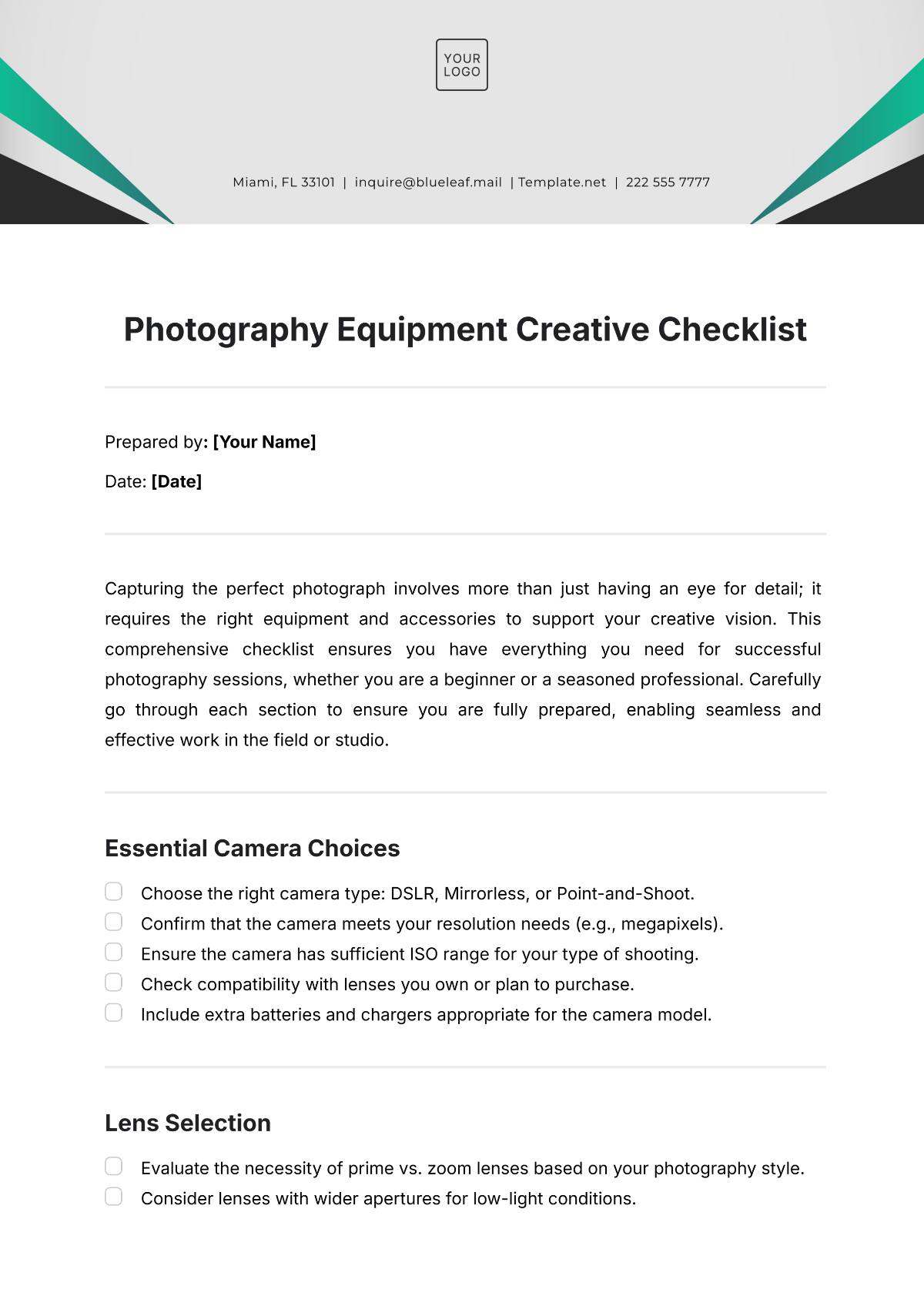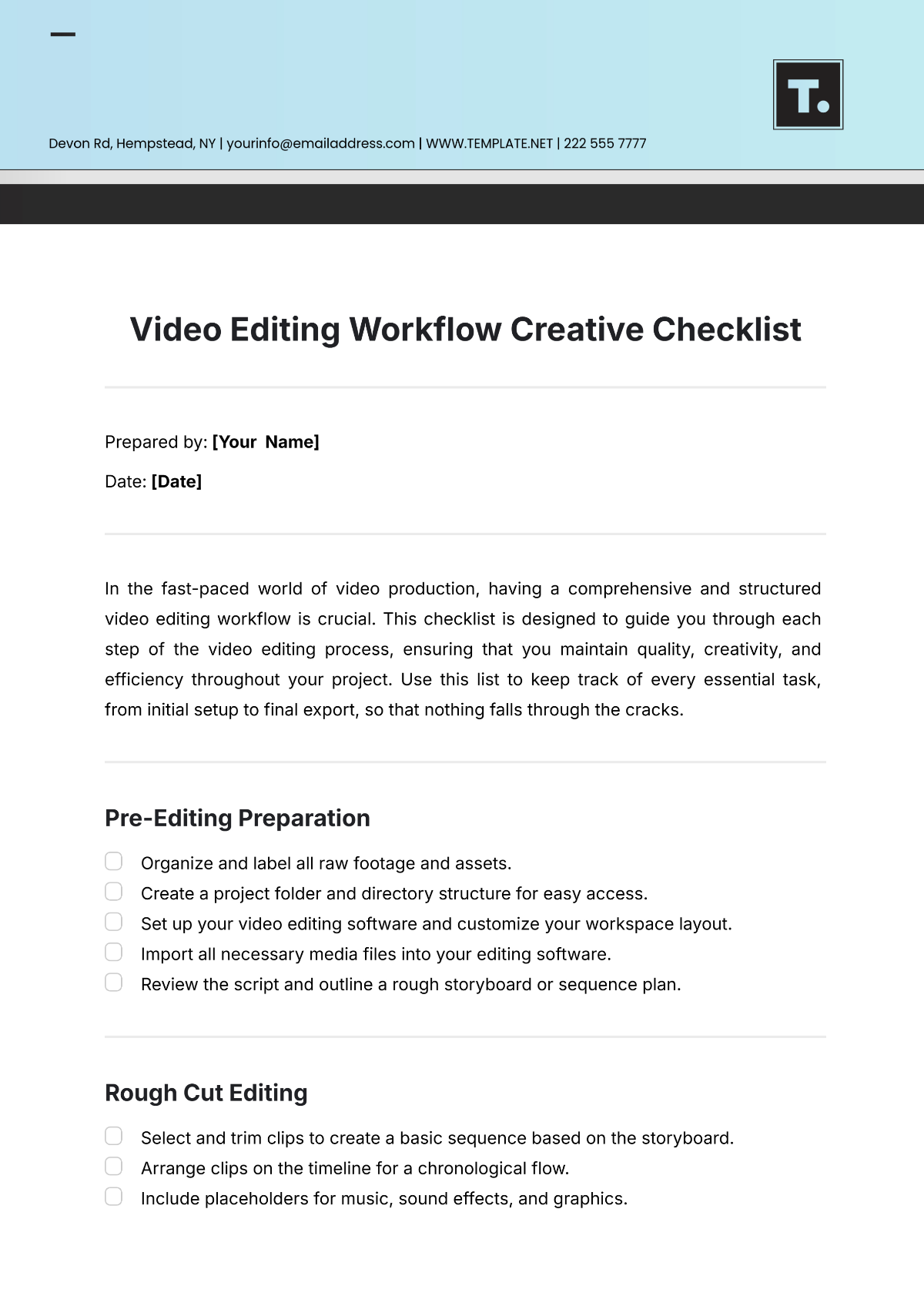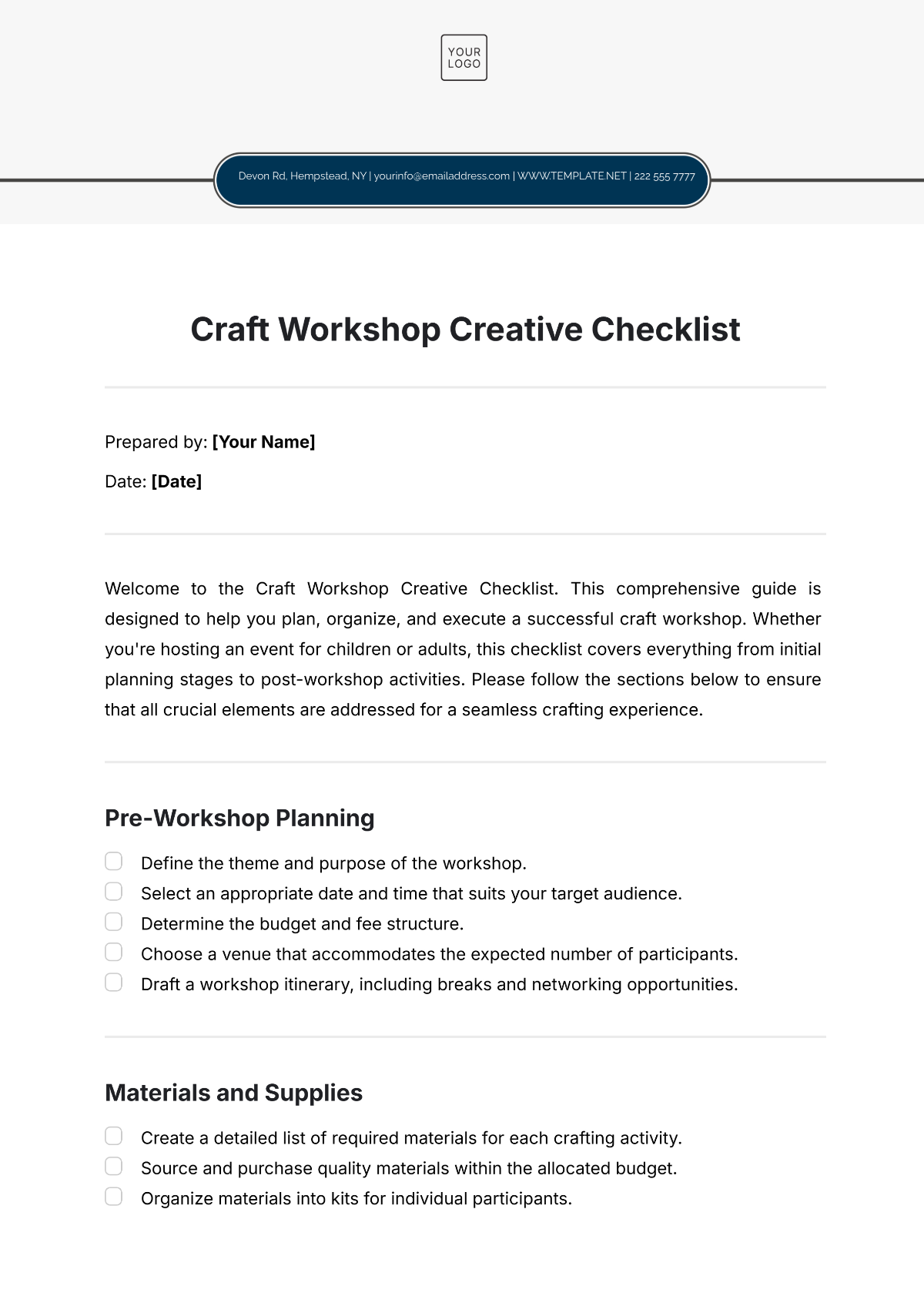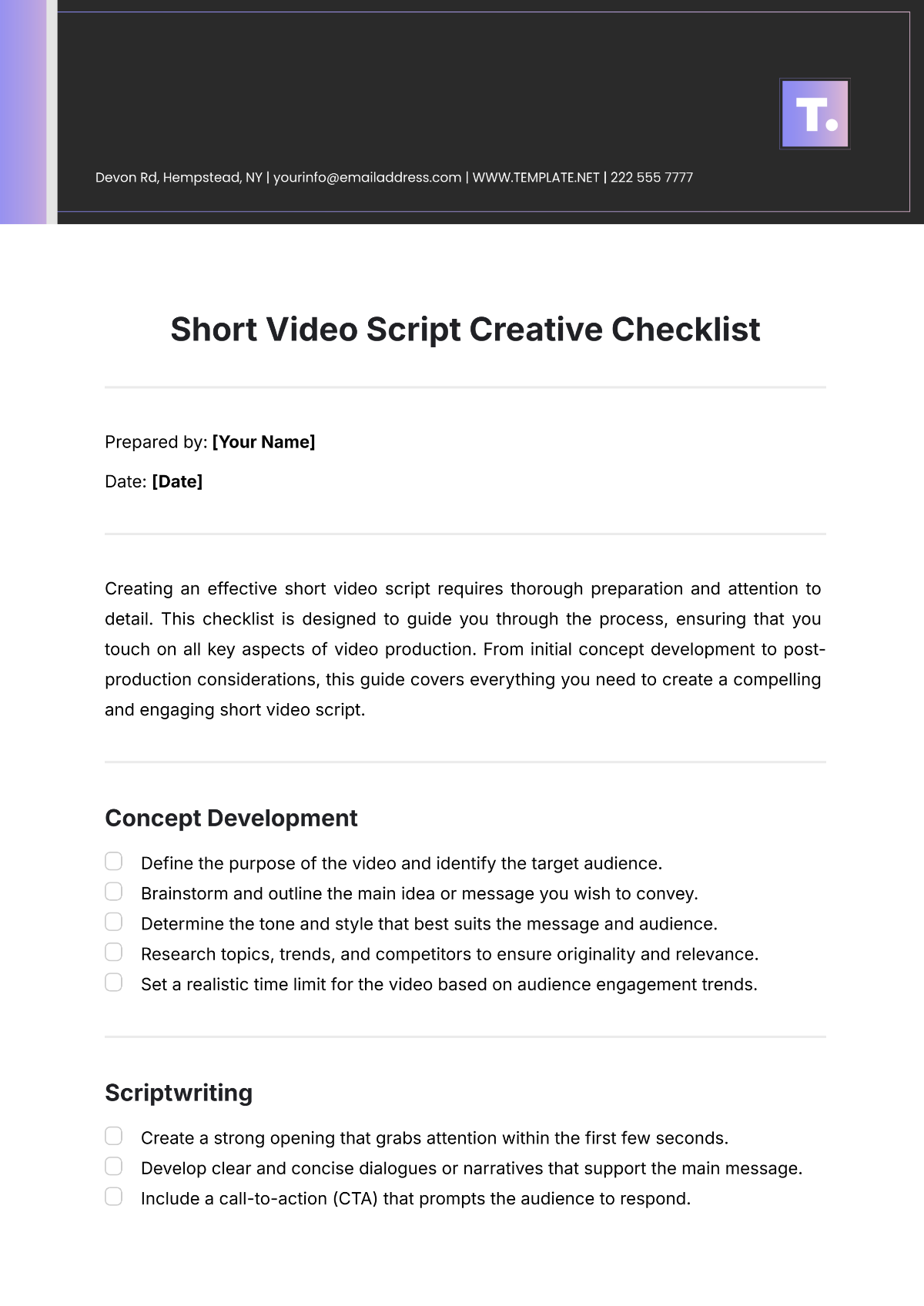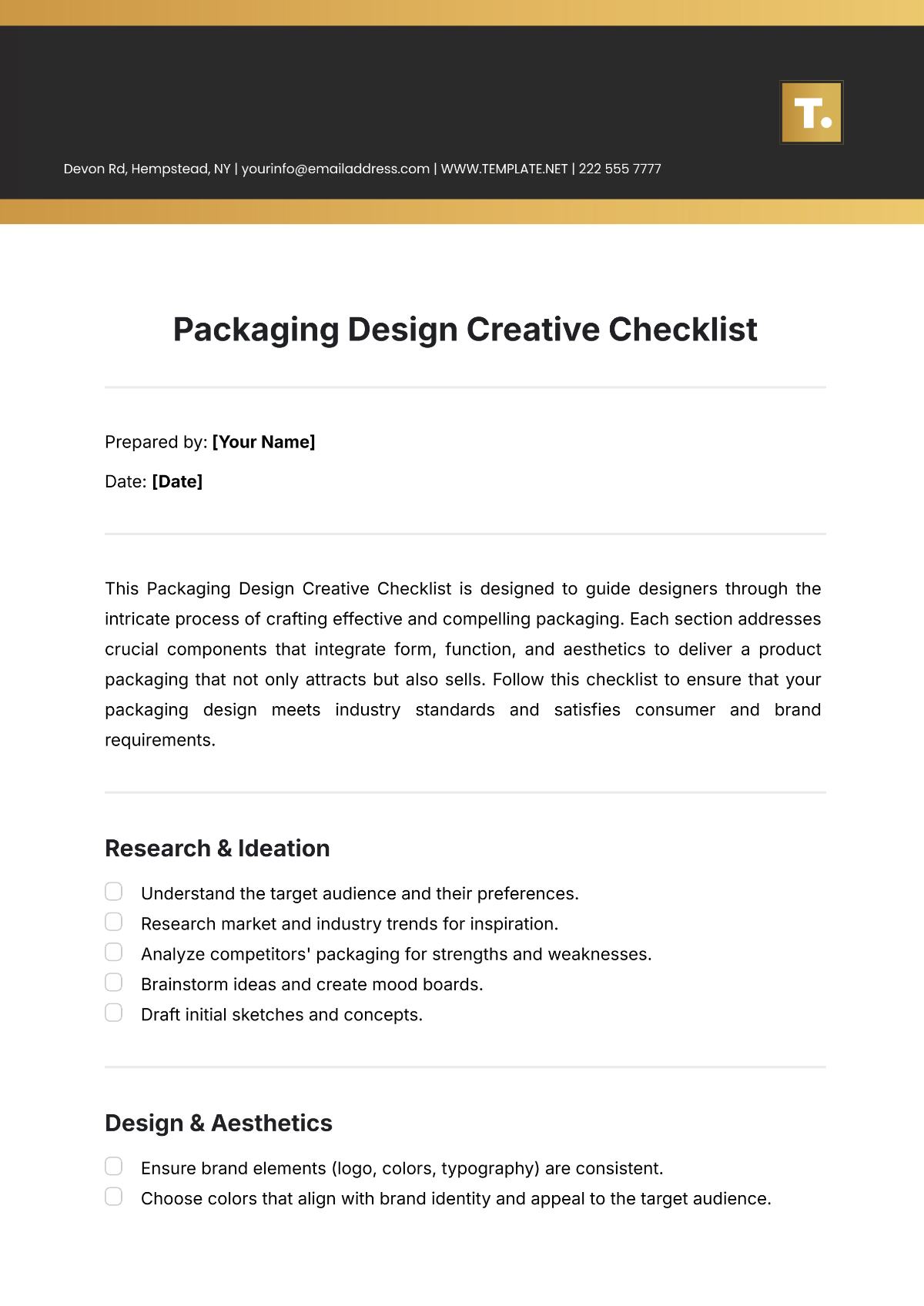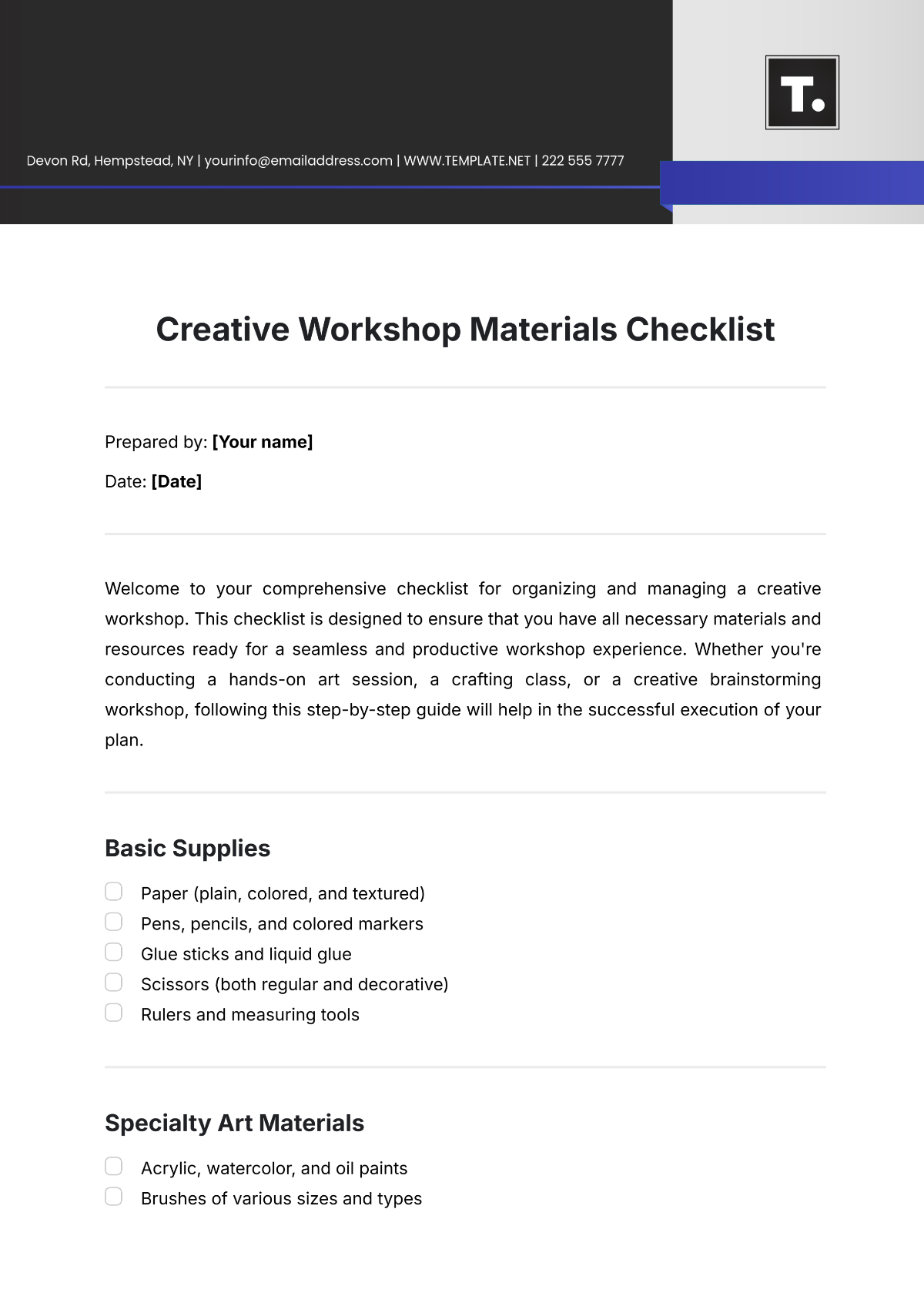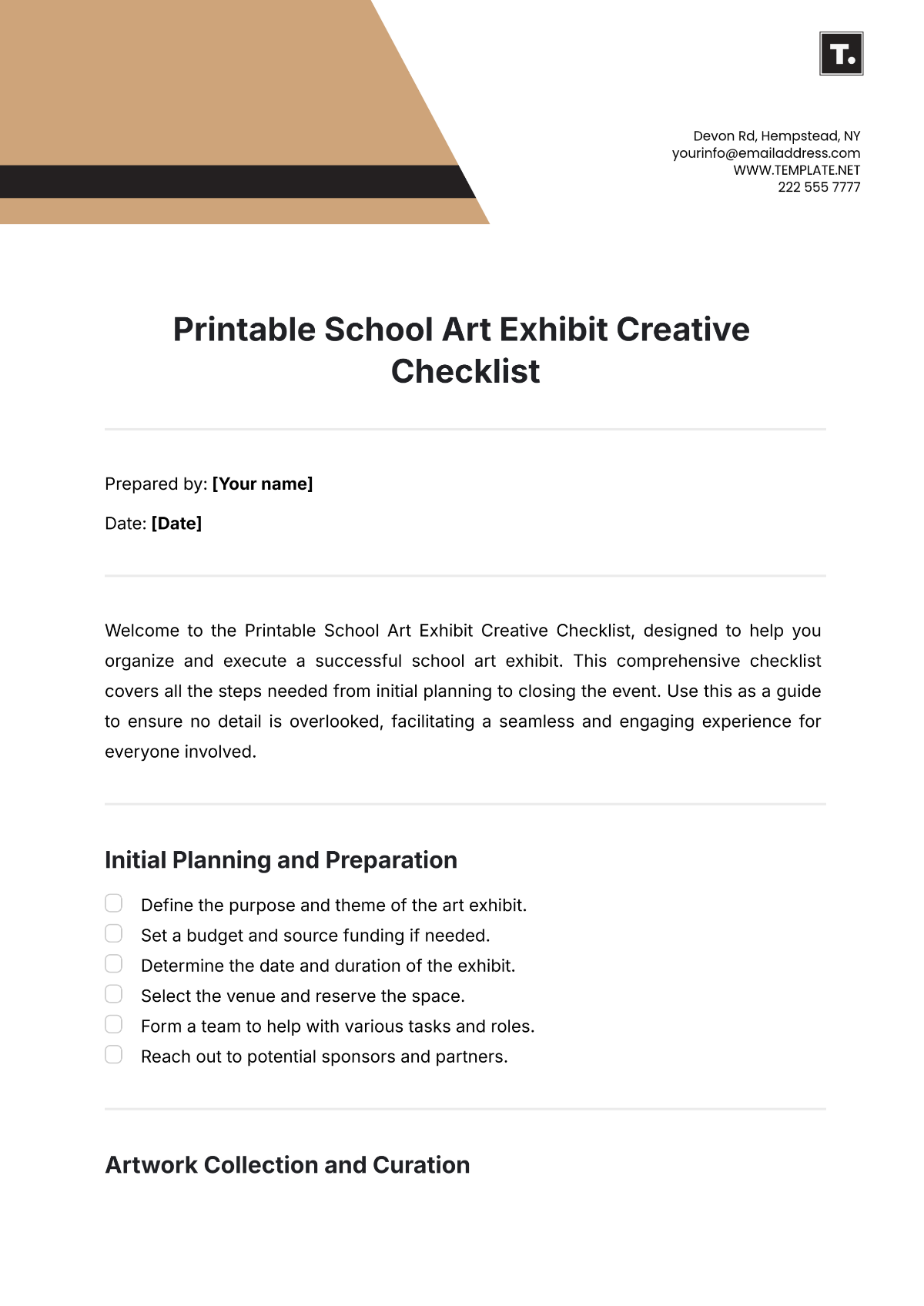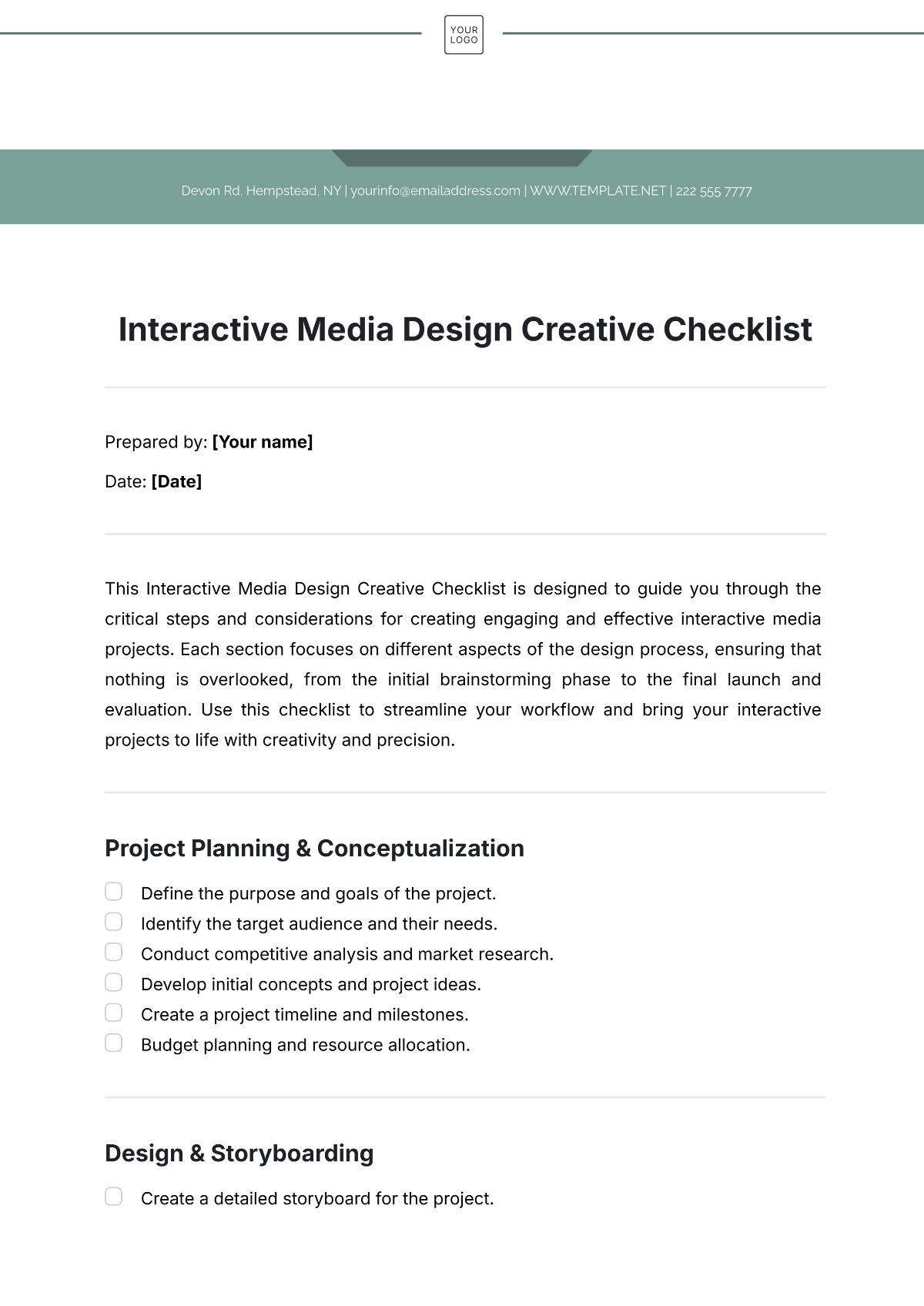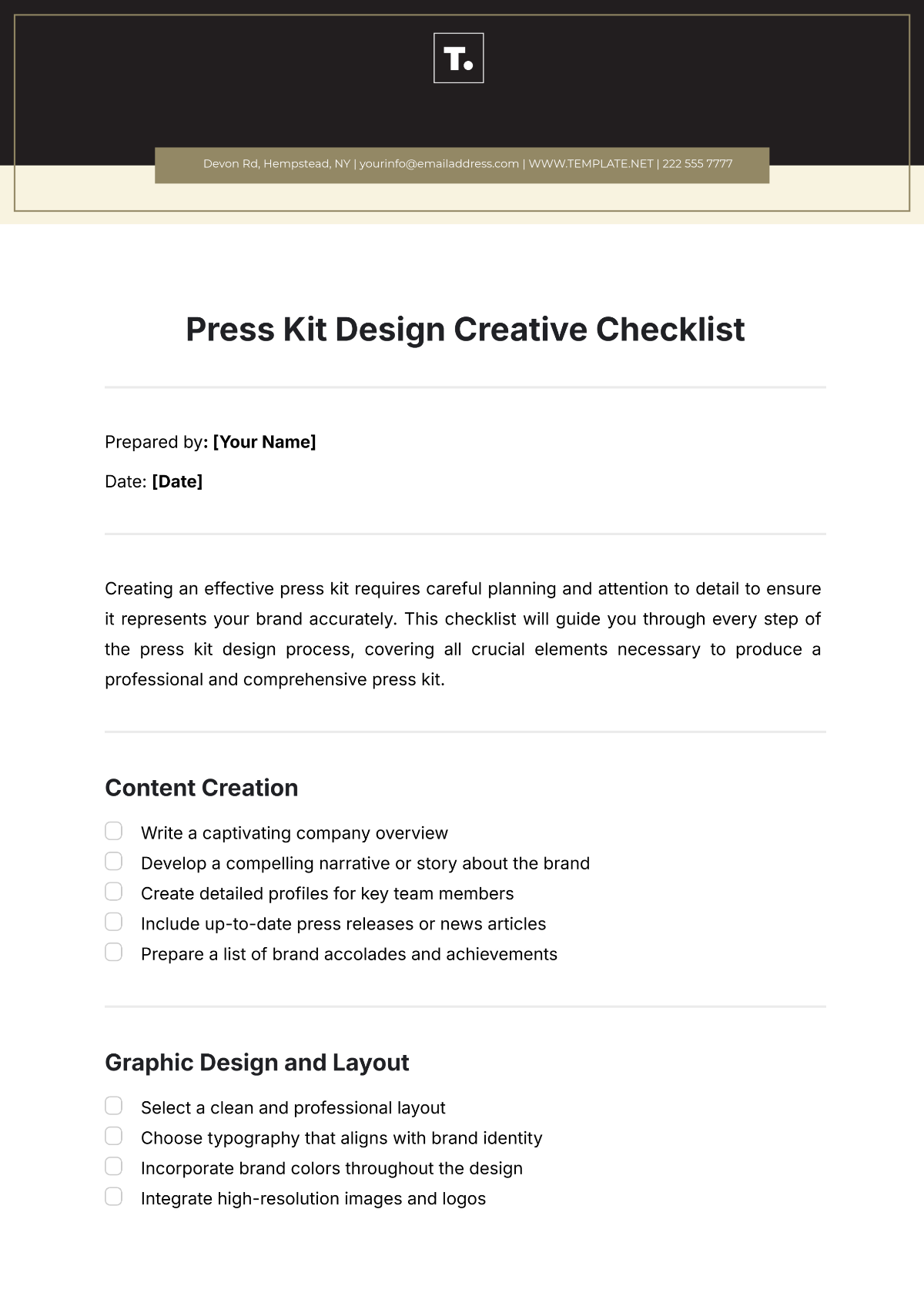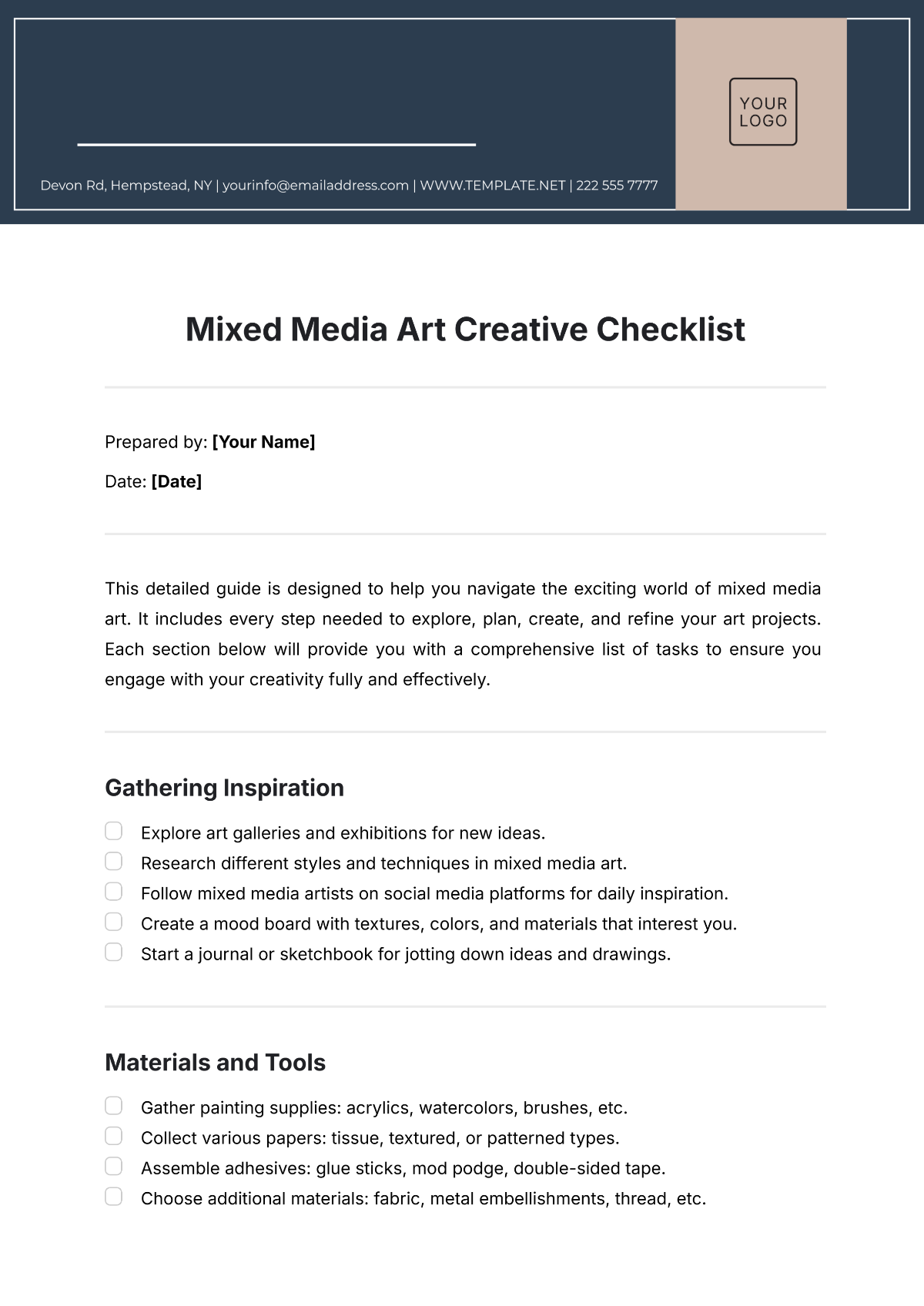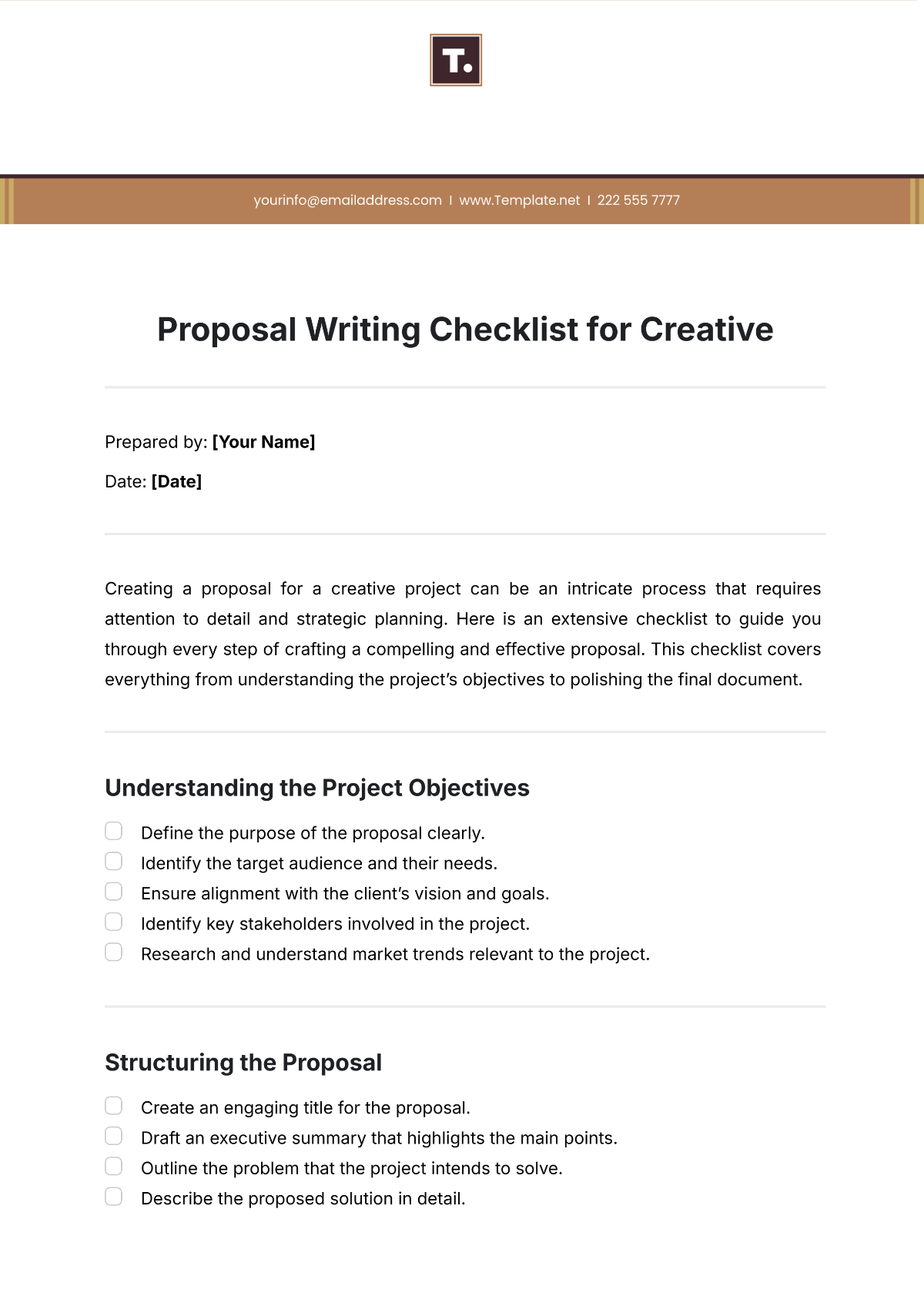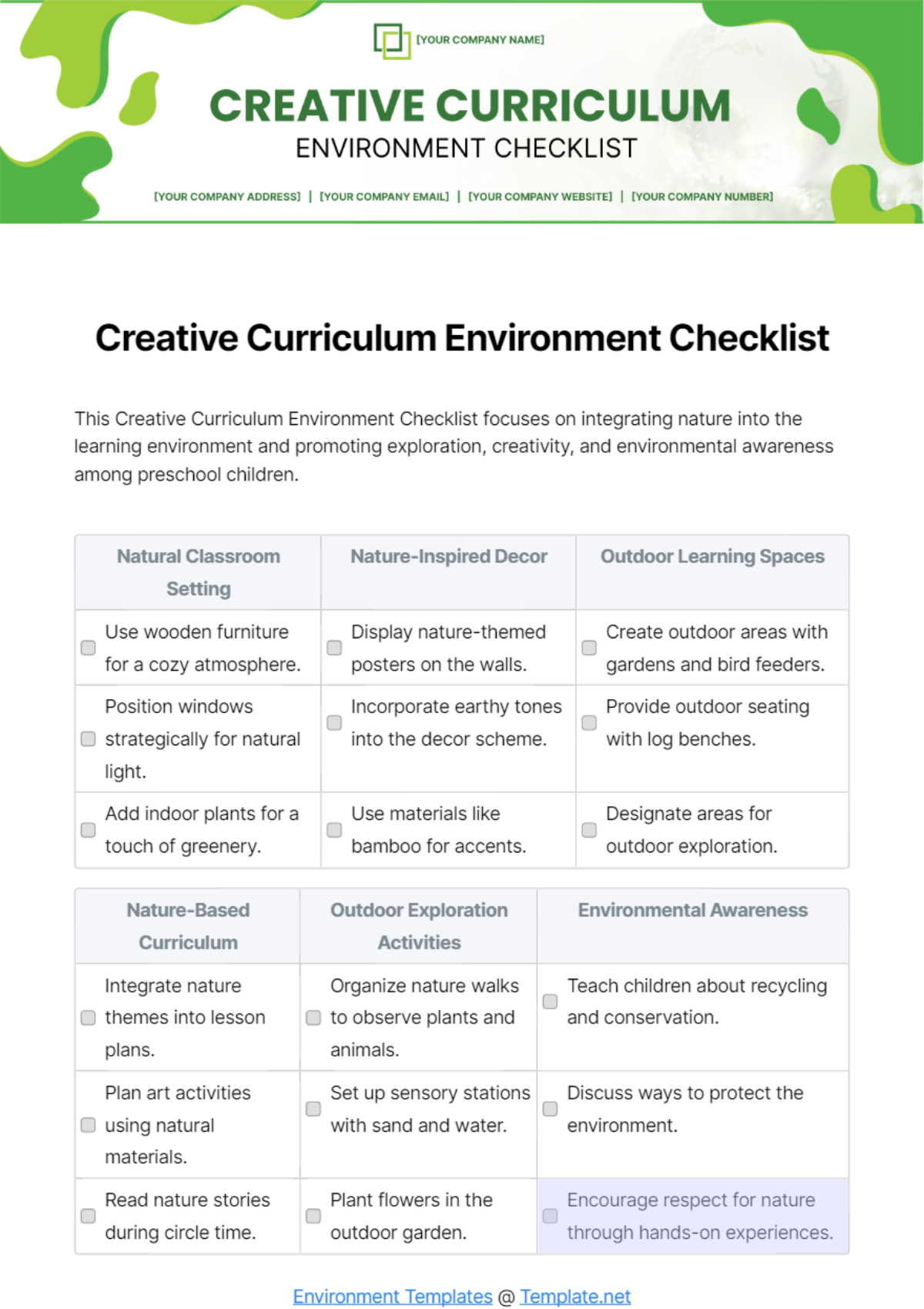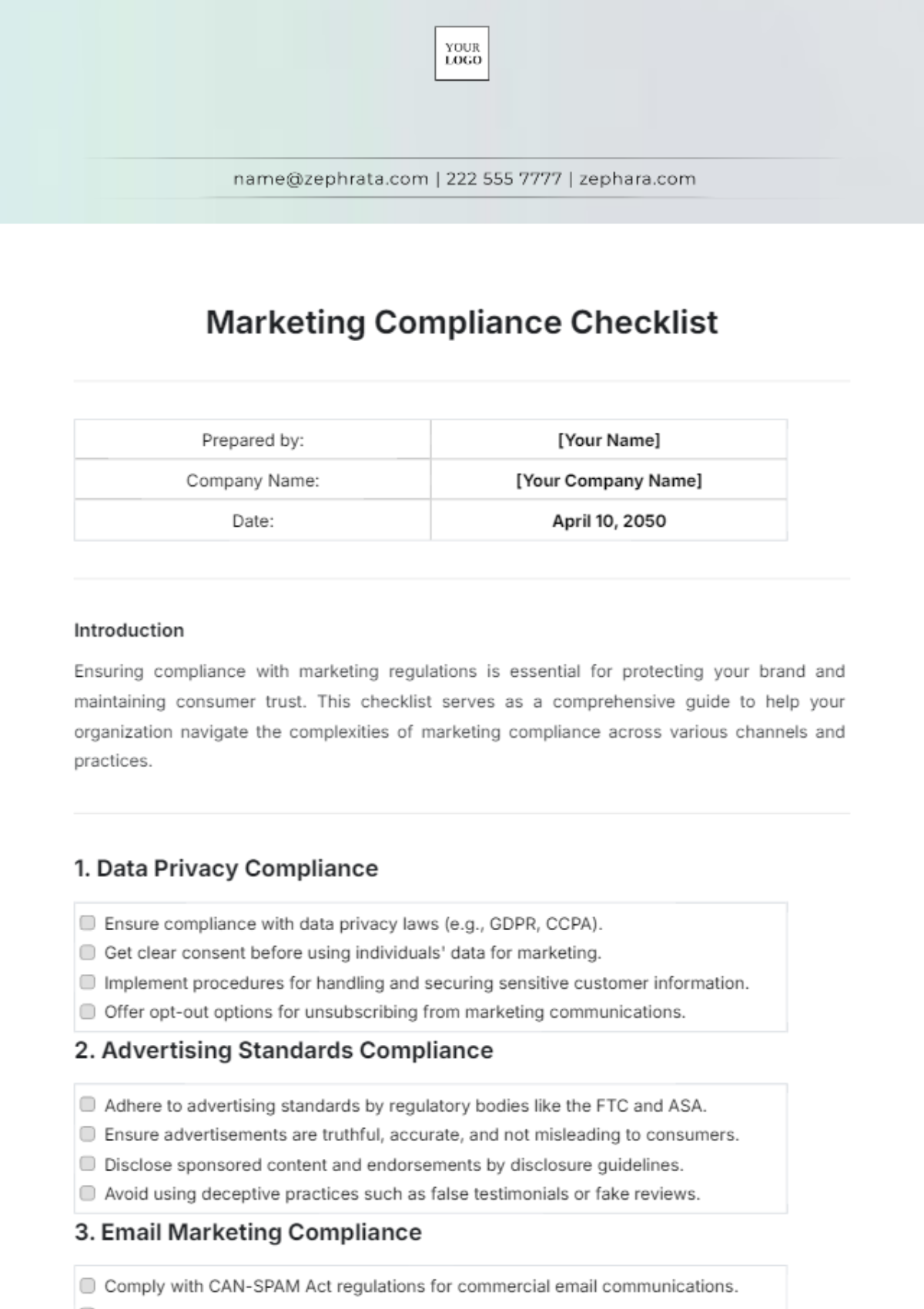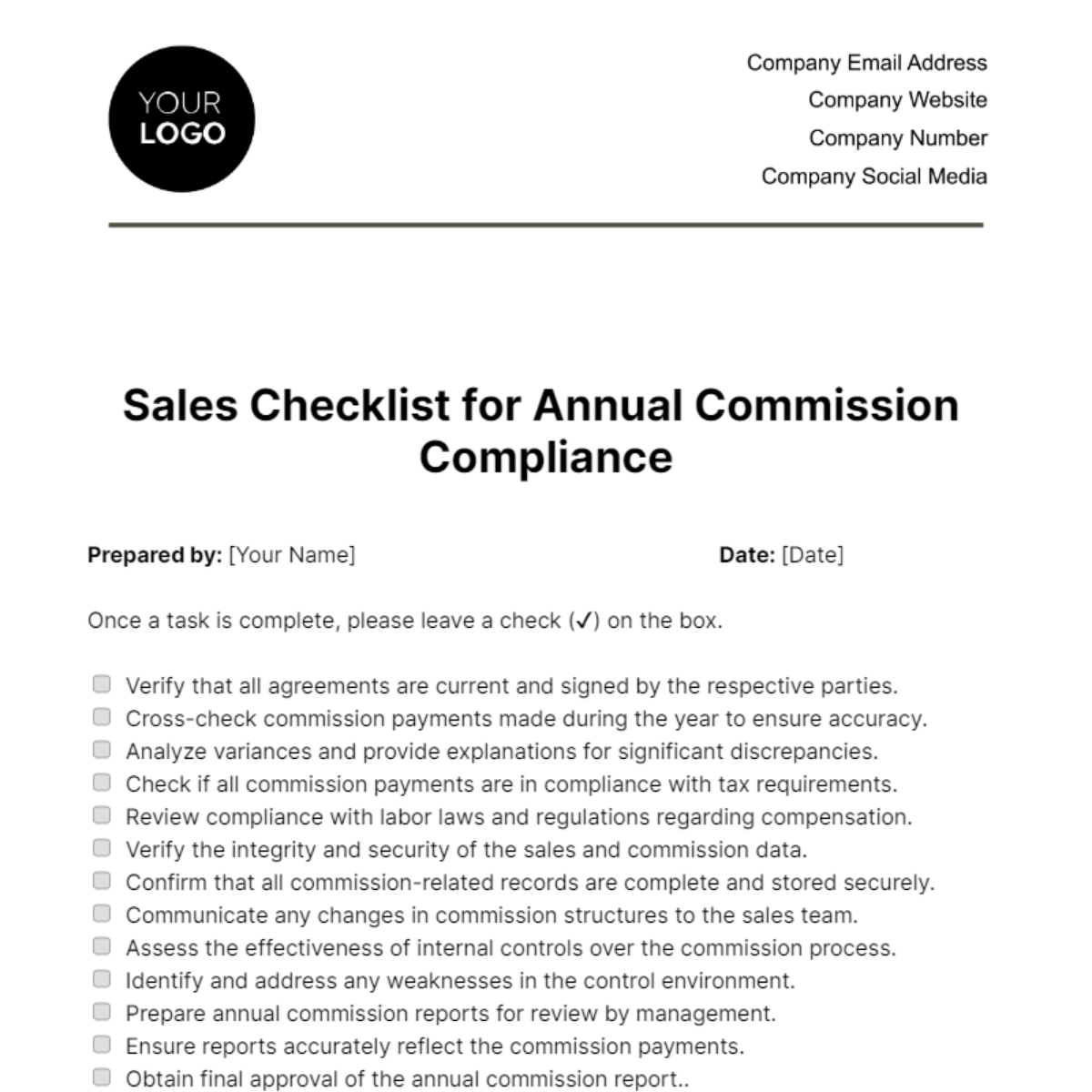Simple Video Pre-Production Creative Checklist
Prepared by: [Your Name]
Date: [Date]
Welcome to the Simple Video Pre-Production Creative Checklist. This comprehensive guide is designed to help you navigate through the essential pre-production stages of video creation. By following this detailed checklist, you can ensure that all critical elements are addressed for a smooth production process and a successful final product.
Concept Development
Define the objective of the video.
Create a clear message statement.
Research target audience.
Choose video style and tone (e.g., documentary, narrative, animation).
Develop an initial creative brief.
Scriptwriting
Outline key narrative points.
Write a draft script.
Develop dialogue or narration.
Incorporate call-to-action elements if necessary.
Review and revise script for clarity and impact.
Storyboarding
Create visual storyboard for each scene.
Determine shot types and camera angles.
Visualize transitions between scenes.
Plan for any special effects or animation.
Ensure storyboard aligns with script.
Location Scouting
Identify potential shooting locations.
Evaluate locations for lighting and sound.
Consider accessibility and permits.
Photography or video of scout locations.
Prepare location maps for the crew.
Equipment and Technical Requirements
List of required camera gear.
Organize lighting equipment.
Assess sound equipment needs.
Verify all equipment functionality.
Plan for equipment transportation.
Talent and Crew
Cast talent for roles.
Hire essential crew members (e.g., director, camera operator, sound tech).
Schedule rehearsals or table reads.
Arrange contracts and agreements.
Compile contact information for talent and crew.
Budgeting and Scheduling
Estimate a detailed project budget.
Allocate funds for each component.
Create a shooting schedule.
Plan for contingencies and emergencies.
Review budget with stakeholders.
Production Design and Wardrobe
Design set decorations and props.
Assemble wardrobe for talent.
Ensure alignment with production style.
Prepare for makeup and hairstyling resources.
Source materials within budget constraints.
Legal and Permissions
Secure rights and clearances for music and footage.
Obtain necessary permits for locations.
Draft and sign release forms with talent.
Address insurance requirements.
Consult legal advisor for compliance.
Additional Reminders
Always have backup plans for weather disruptions and equipment failure.
Keep communication open and frequent with all team members.
Ensure all involved have a clear understanding of their roles and responsibilities.
Double-check all logistical arrangements a few days prior to shooting.
Maintain a list of emergency contacts and resources.
